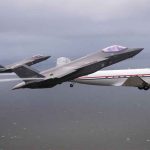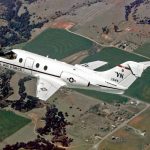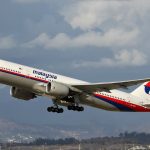DISCLAIMER: tickets for these flight were offered to Aviacionline by Blue Air. However, our editorial independence is a non-negotiable value and all views expressed here are mine and mine alone, regardless of who paid for the ticket.
In a world of 737 MAXes and A320neos, flying the 737 Classic is almost a revolutionary act, if not from the fuel efficiency point of view, at least from the aviation enthusiast side. The series, namely the 737-300, -400 and -500, had its last roll out in 1999, according to B737.org.uk.
Especially in the ruthless Europe market, the Classics have essentially disappeared for its undesirable side effects of high fuel consumption and high maintenance requirements.
That’s why the entire point of my trip to Romania with Blue Air was flying their 737 Classic. The airline, despite being a low-cost carrier, still keeps two Boeing 737-500s in their fleet. That’s, I think, for the aircraft’s low ownership cost, while at the same time the flexibility it allows in their fleet when a flight sells a little bit less, as the -500 carries 120 passengers, while their only -700 carries 148 and their -800/MAX 8 both carry 189.
At the time of our flight, there was no certainty that the -500s would fly at all (they are deployed on a very short notice), so we kept tracking Blue Air’s flights on FlightRadar24, until it showed that the day’s run to Iași would be operated by YR-AMA, so we went for it and got our boarding passes with Blue Air.
We were staying at the Hilton Garden Inn Bucharest Airport, which was like a block away from the terminal, so we could do a flight like this in such a short notice.
Bucharest Airport’s terminal is quite nice for a city of its size, although the airport is still relatively far from the capacity levels it saw before COVID hit.

We arrived about 90 minutes before the flight to get our printed boarding passes, and check-in was still in progress in Blue Air’s counters. The airline, as one of the home carriers, has its dedicated check-in area.

The terminal is not so large, so to go from one side of it to the other is quite easy and fast. Me and Thiago (his Instagram is @trevisan26_aviation), who was joining me on this trip to help with the photos, made the walk from check-in to the safety screening area in about five minutes.
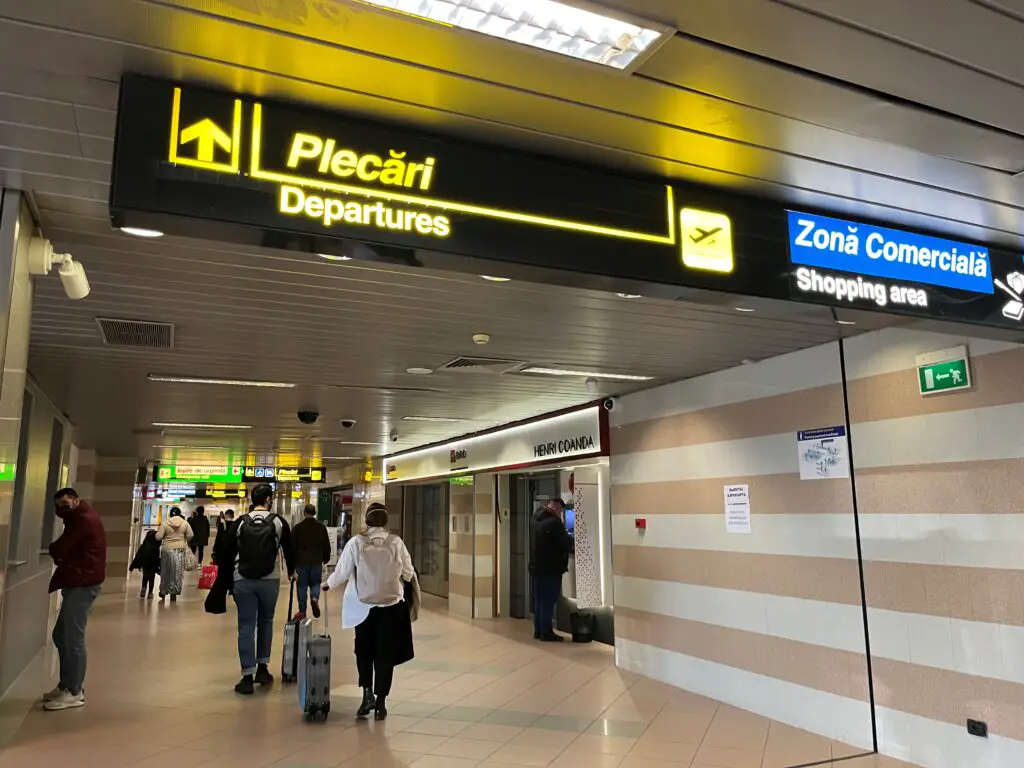
0B6301 OTP-IAS
The majority of the flights from Bucharest is international, and because Romania is not a part of the Schengen border agreement, all flights leaving the country must pass by border control. This effectively means that the domestic and the international departures must be separated.
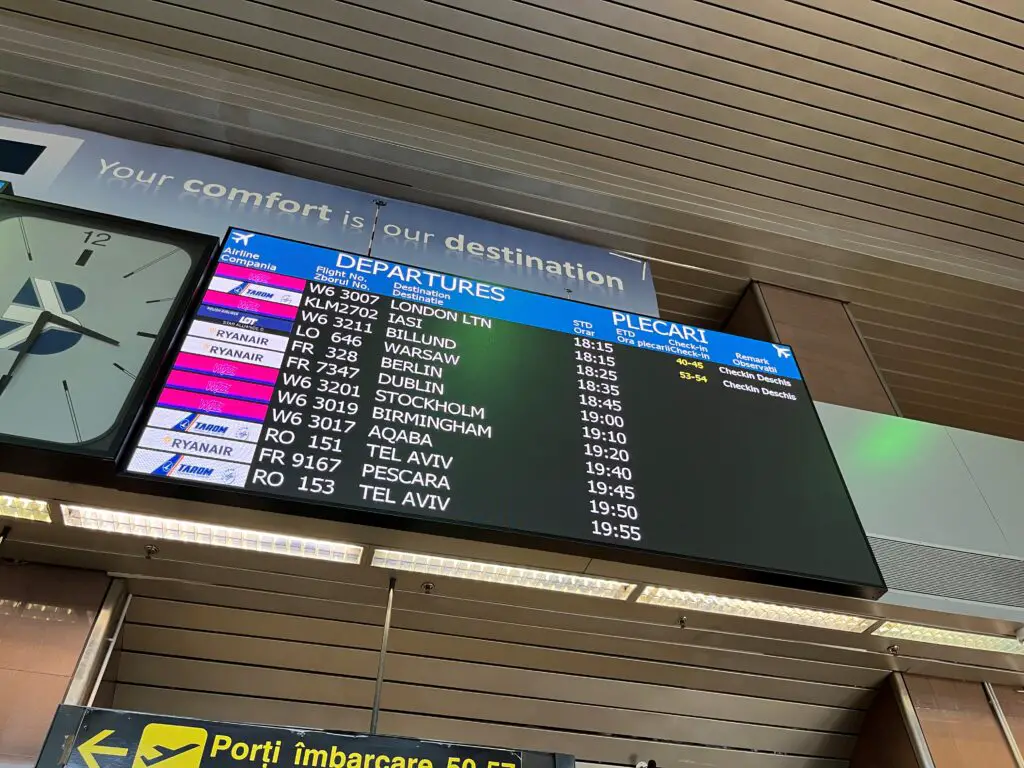
Getting through the safety screening didn’t take long. As that was one of the few domestic flights of the day, the domestic area was all but empty.
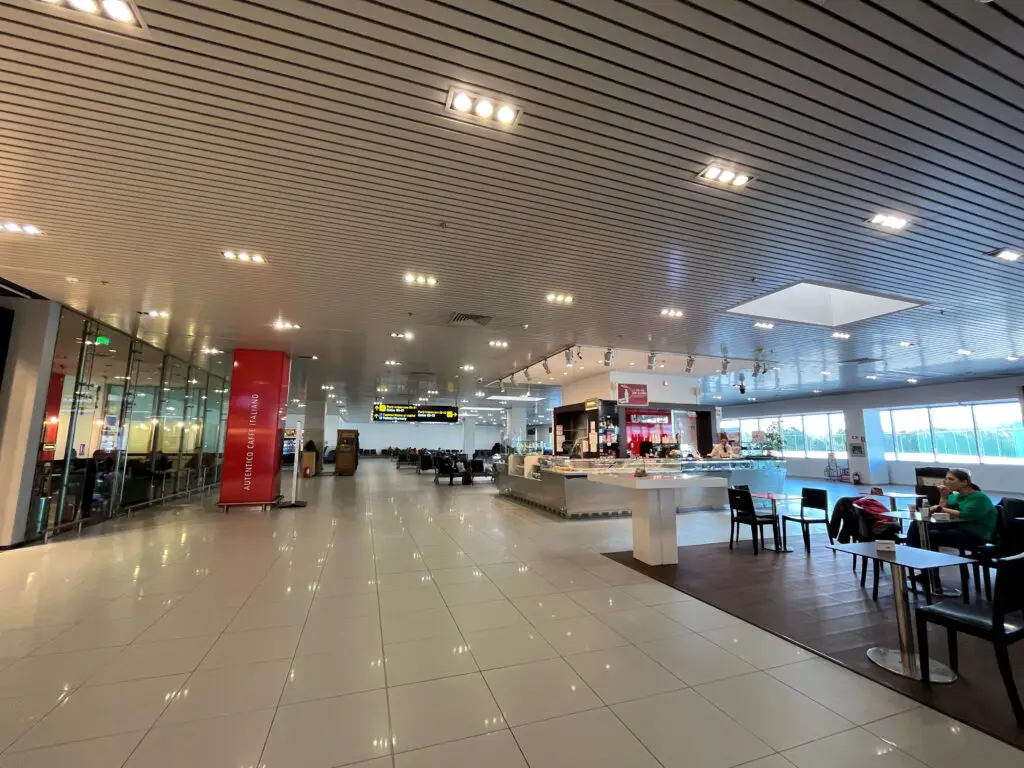
At least the walk to the domestic part of the terminal provided us with a good view of the international side of the terminal, which counts with boarding bridges. There are not many places where you can see a Qatar Airways A320, a TAROM A318, a Wizz Air A320, a Blue Air 737 MAX 8 and a TAROM 737-800 side by side.
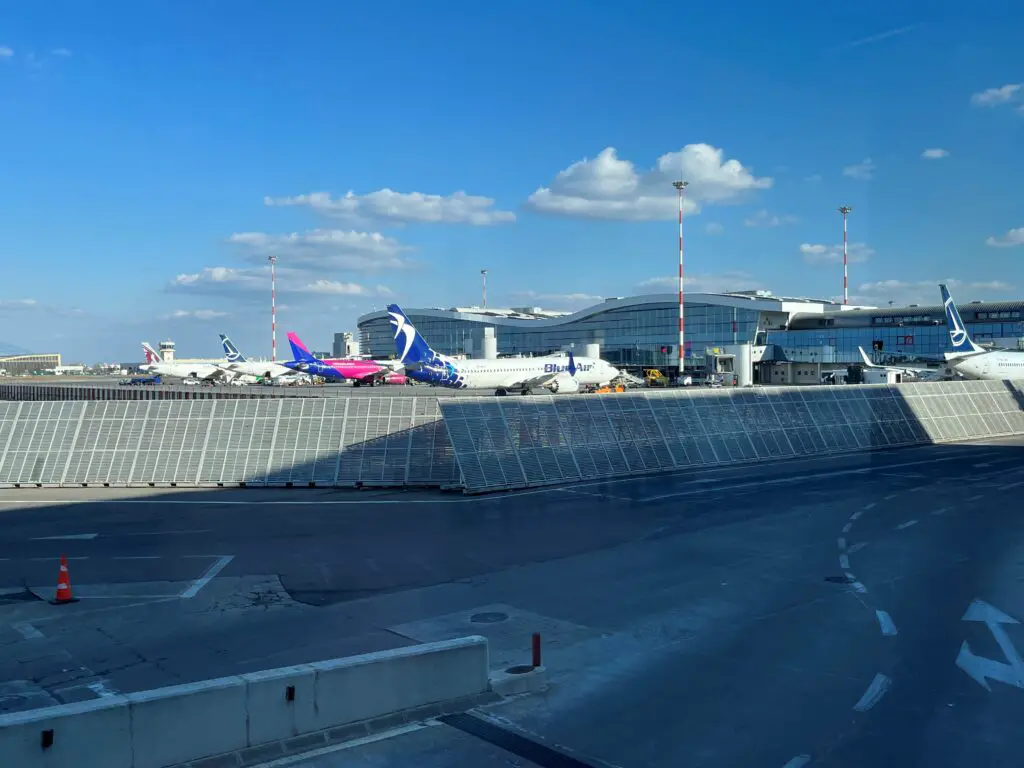
The domestic gates are naturally way smaller than the international terminal, but that’s for obvious reasons. There were only seven domestic departures that day, versus 89 international.
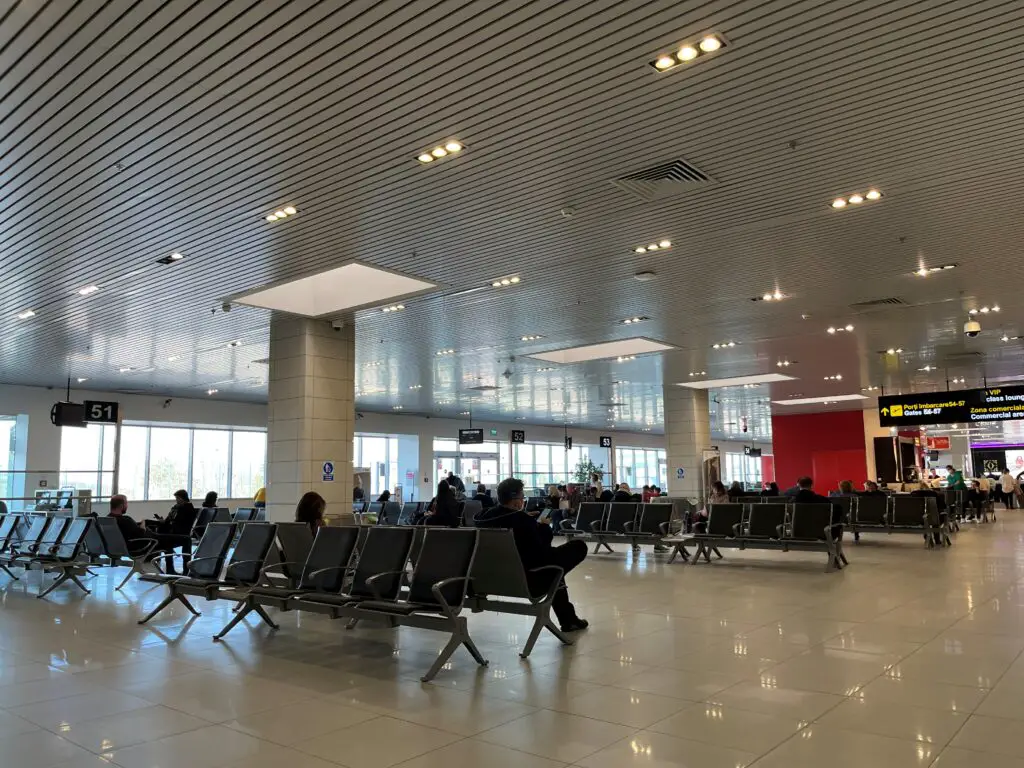
This also means that these gates all lead to buses, where we are taken to the remote positions on the other side of the airport — the boarding bridges are focused, naturally, on the international flights.
But there was no rush, for only 72 passengers would occupy the 120 seats of the 737-500 — that was the reason why the -500 was deployed in the first place. Boarding happened on time and soon we were left in front of YR-AMA.
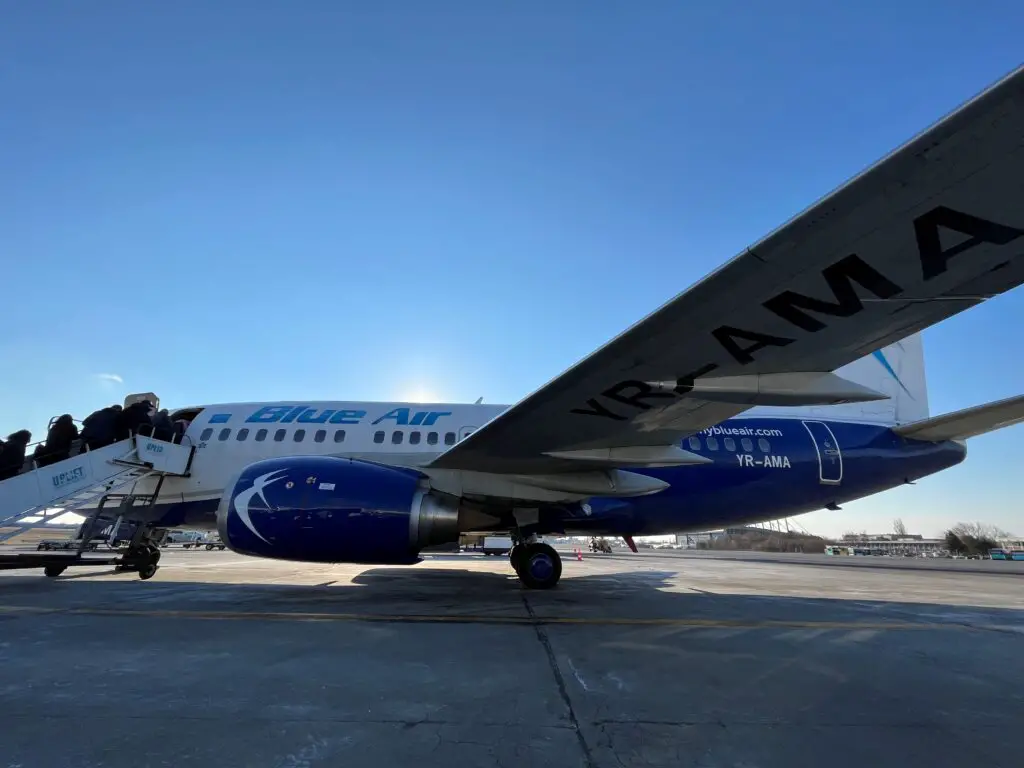
AMA was 30 years old at the time of our flight, and was still going strong. According to Planespotters.net, the aircraft was originally delivered to Lufthansa on May 1991. Named «Rendsburg», it operated for the airline until November 2015, when it was sold to American lessor Automatic LLC in a batch of nine 737-500s and two 737-300s.
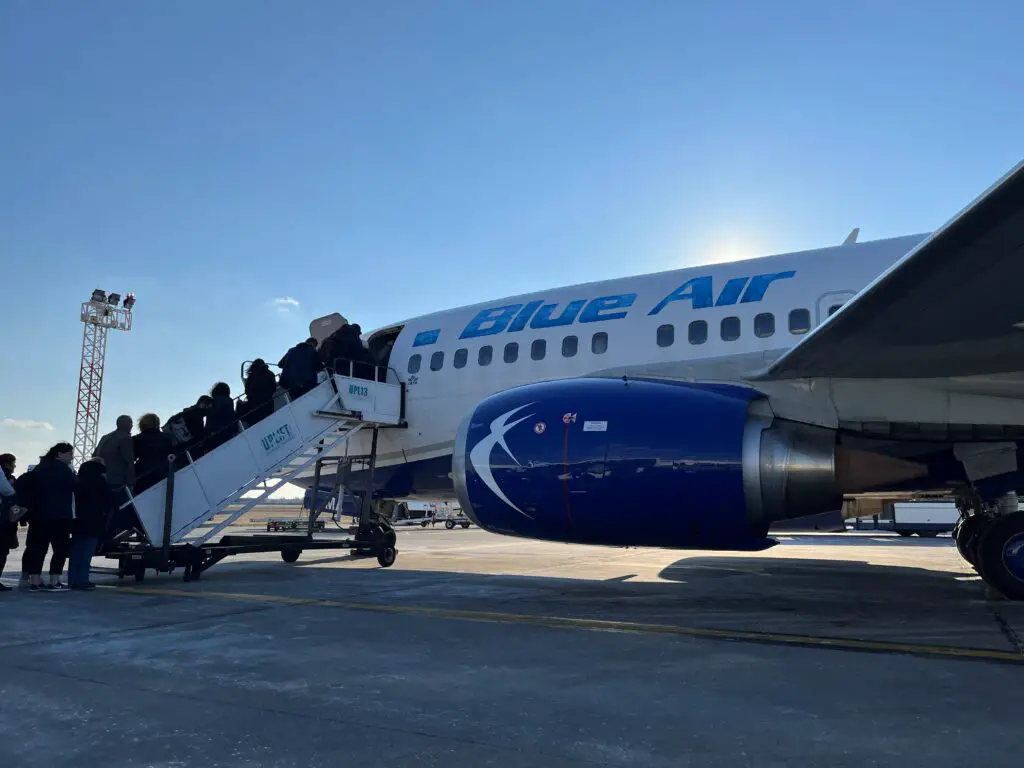
The aircraft was then leased to Blue Air on April 2016, where it has been operating ever since. So despite three decades of service, Blue Air is just the second operator of this airframe.

By our side, YR-MXA, which was the first Boeing 737 MAX 8 delivered to Blue Air, one year prior to our flight. It looked beautiful in that late afternoon light.
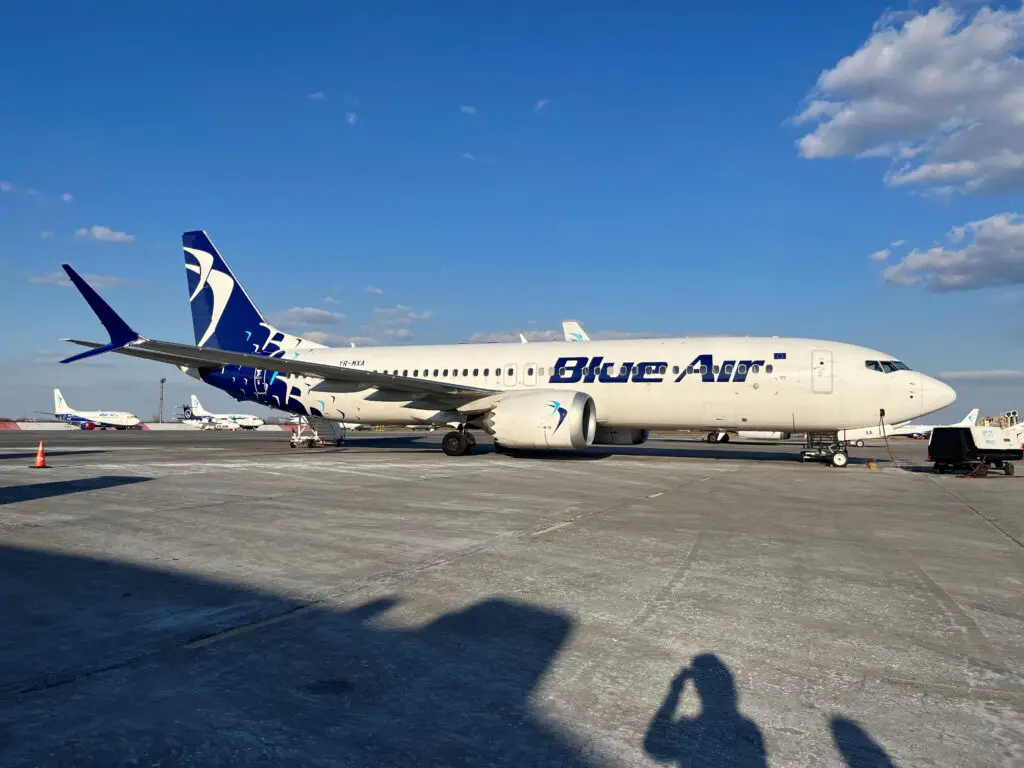
Back to our 737-500, the livery was already worn off, but I suppose the plane is nearing its retirement anyway.
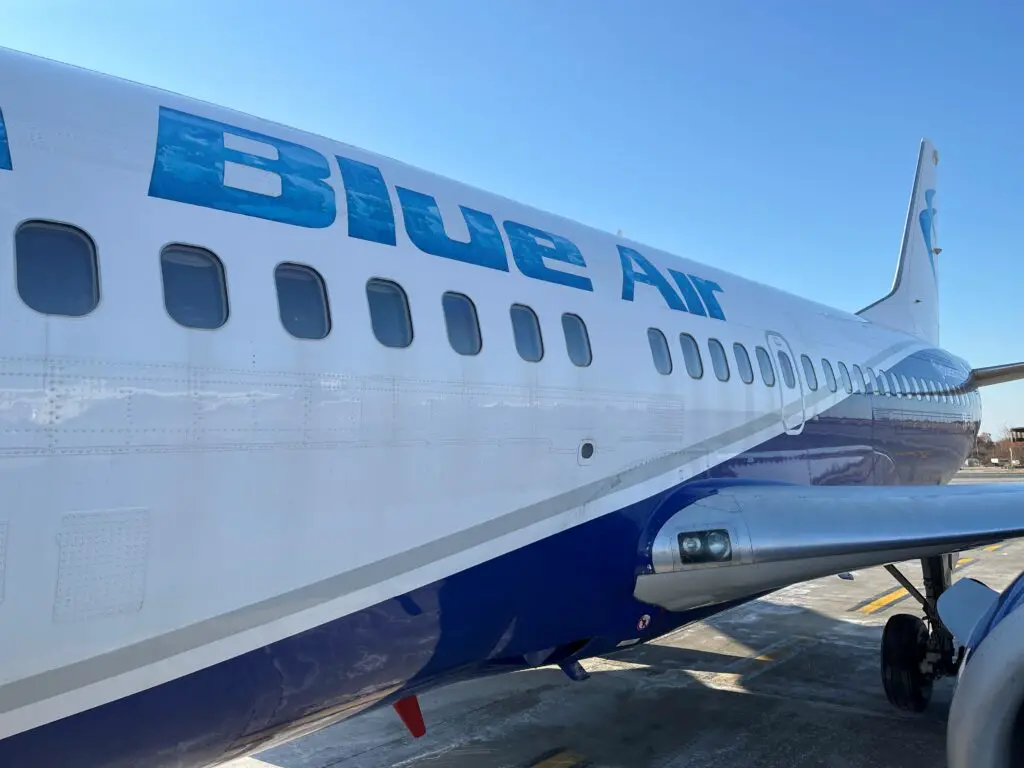
And this view will never get old.
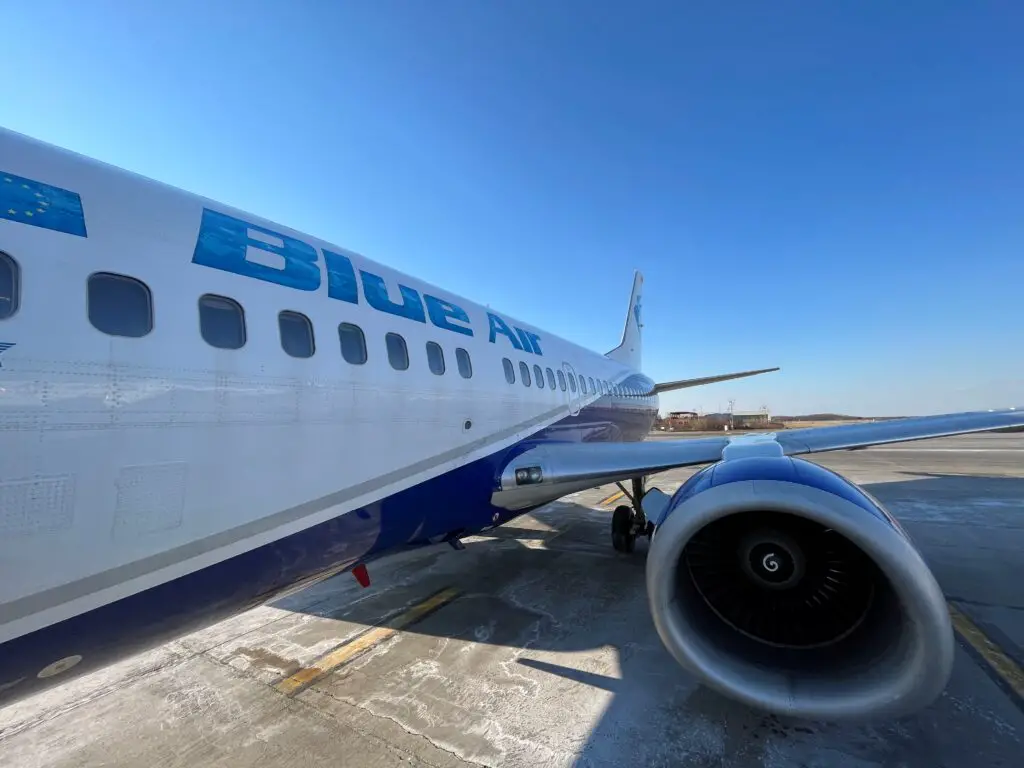
For this flight I would be on the best seat in the house — the jumpseat! When I introduced myself, Captain Viorel Iorga and First Officer Sergiu Androne were already doing the last preparations for our flight.
By the way: eventually we’ll publish the videos of this trip on our YouTube channel… they definitely do more justice to the actual feeling of being on the jumpseat. Stay tuned there.
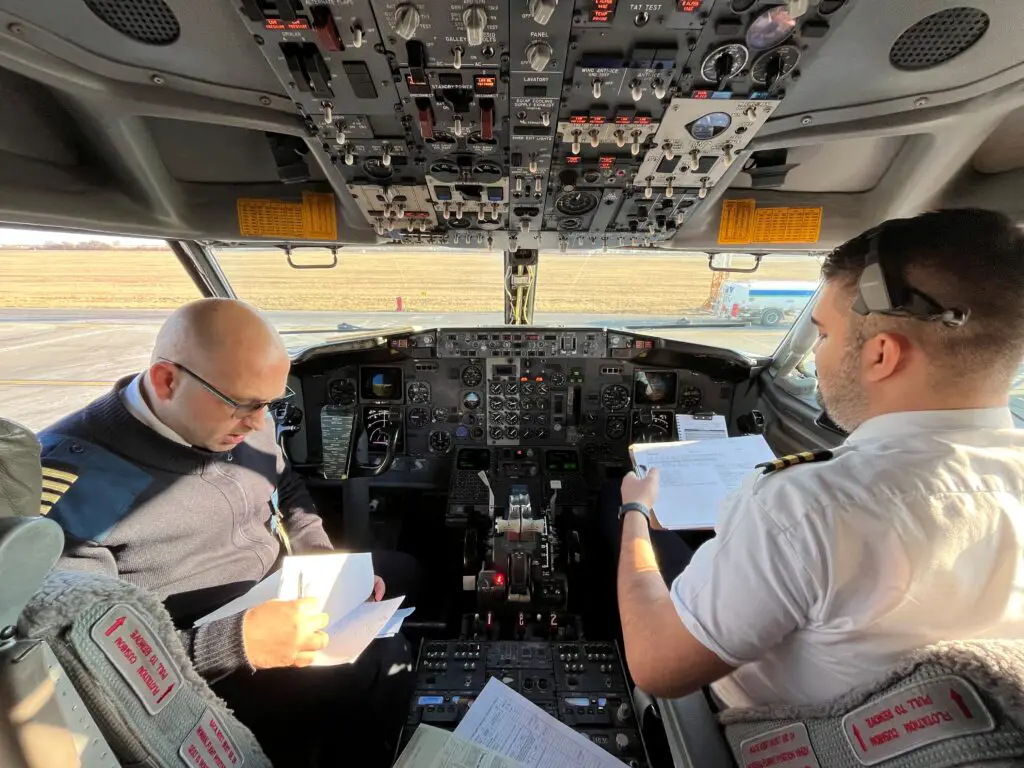
Passengers boarded the aircraft very quickly and we left more or less on time. Pushback was started at 16h52, seven minutes after schedule, and a relatively long taxi followed.
It was so cool to hear the pair of CFM56 engines gaining life as the Captain and the FO commanded that multitude of switches.
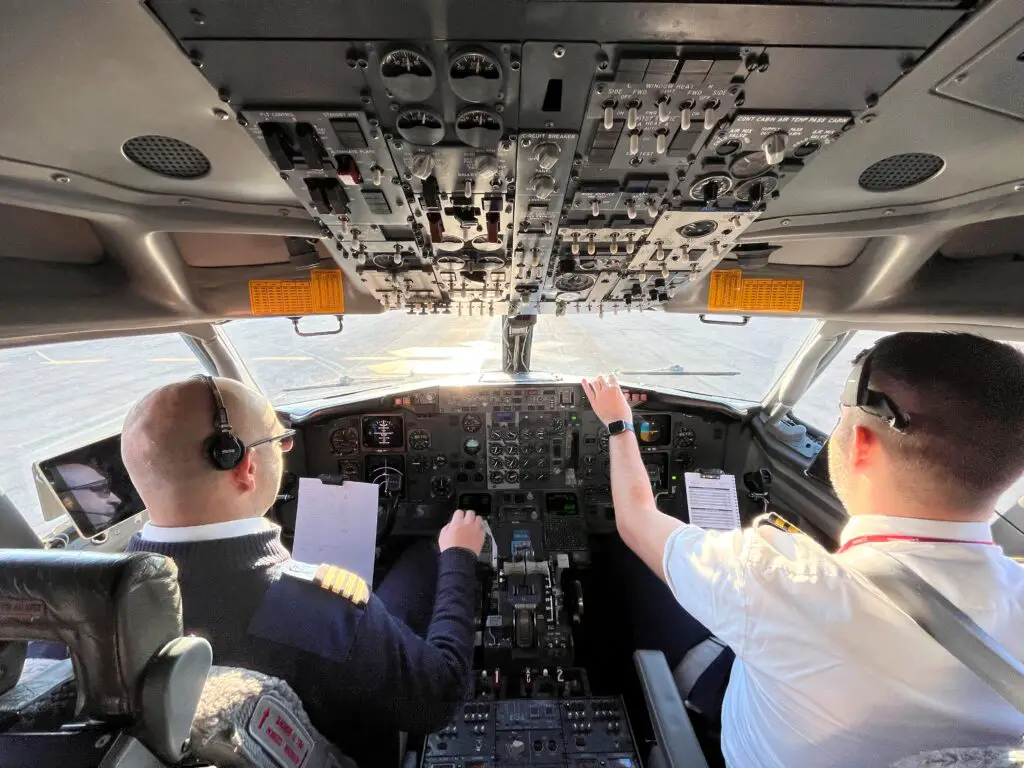
Bucharest Airport has the advantage of having two parallel runways on each side of the complex, so one runway is used for landing and another for take-offs. Still, there were two flights ahead of us, including this TAROM A318.
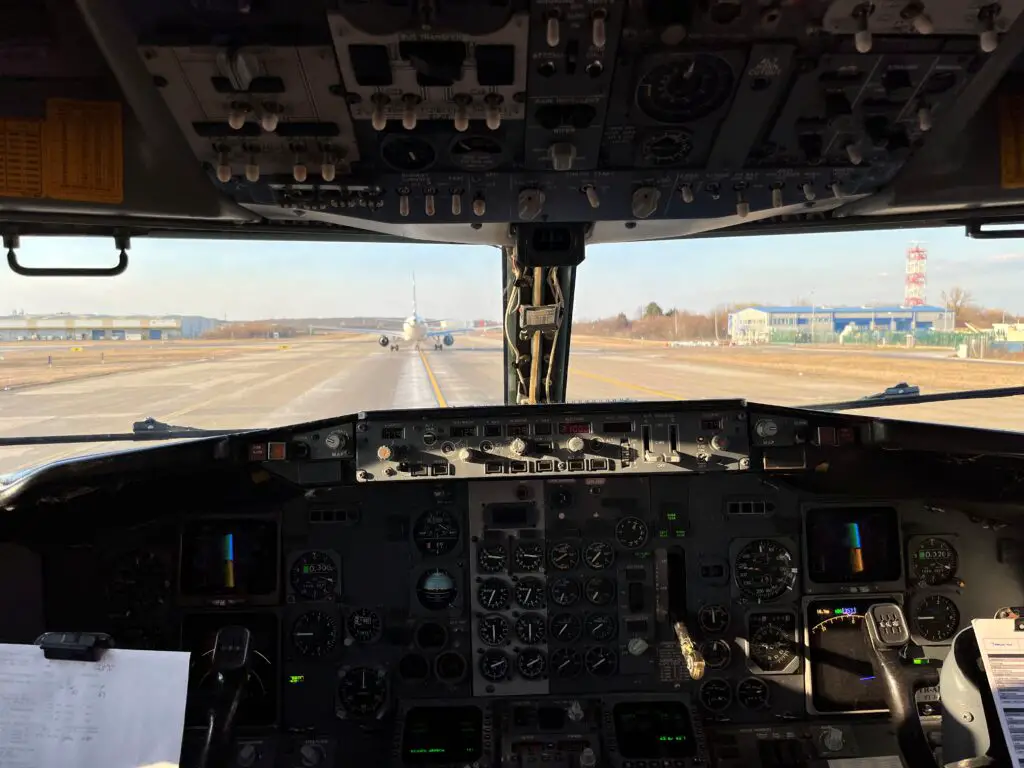
The low number of passengers and the short distance of the flight meant we were very light that afternoon. At 17h11 FO Androne started taking the thrust levers forward, and the pair of CFMs responded accordingly.
Mike Alpha blasted out of Bucharest like a rocket. Take-off weight was at 43.4 tons, way under the MTOW of 54t. Fuel carried was at 4.6 tons and traffic load (including the crew, passengers, their bags and cargo) was at 5.9 tons, meaning the 737-500 was on the top of its performance.
A left turn followed as we bowed to Iași. Our cruise altitude would be of 27,000 feet.
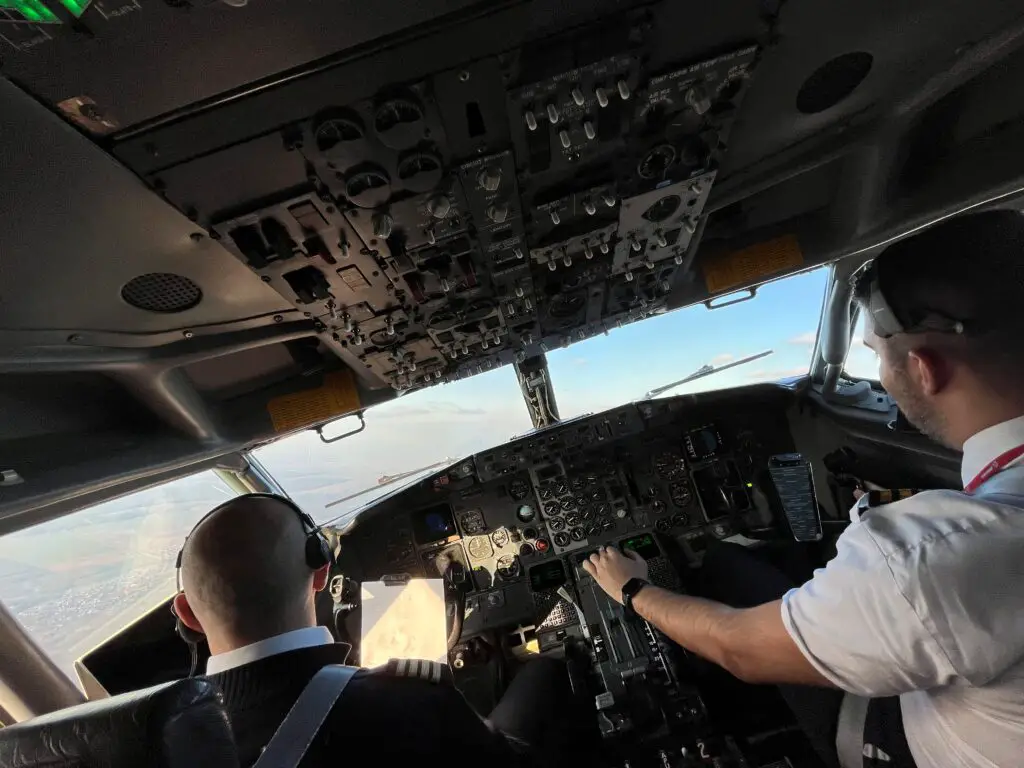
It was definitely a beautiful day to fly. A 40-minute hop to one of the cultural and economic hubs of Romania, Blue Air’s five weekly frequencies to Iași bypass what would otherwise be five hours in a car or six hours or more in a train.
So while there is no time for onboard service, this is more than compensated by the convenience of a flight like this.
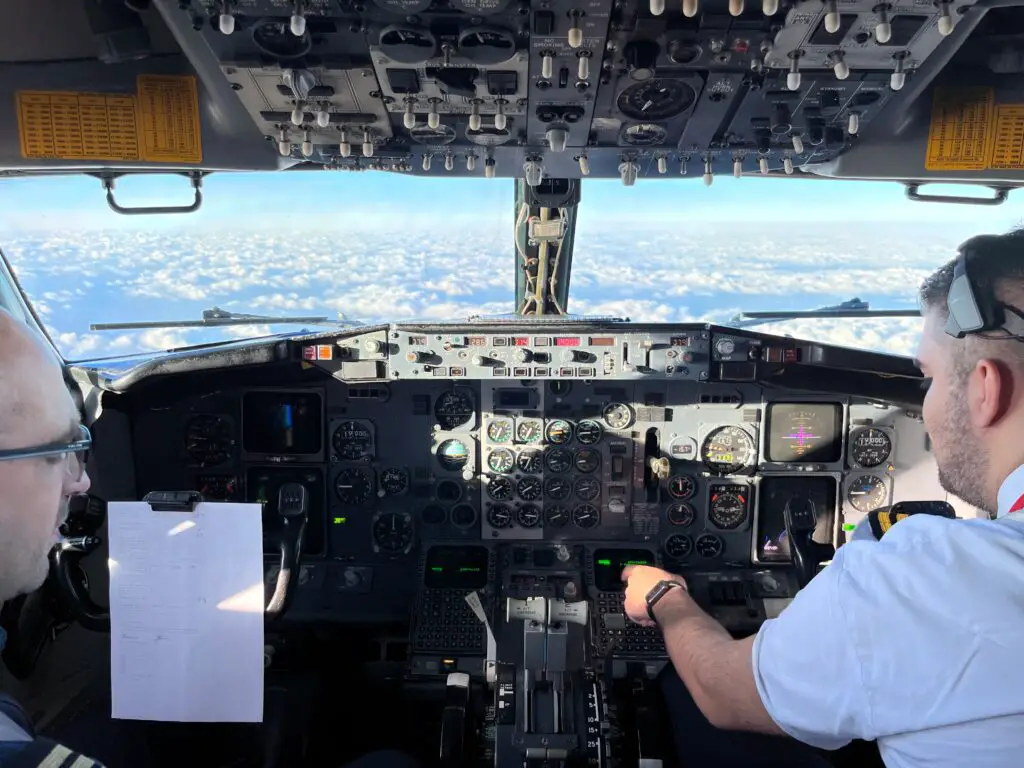
The sun was already setting and the view from the jumpseat was great.
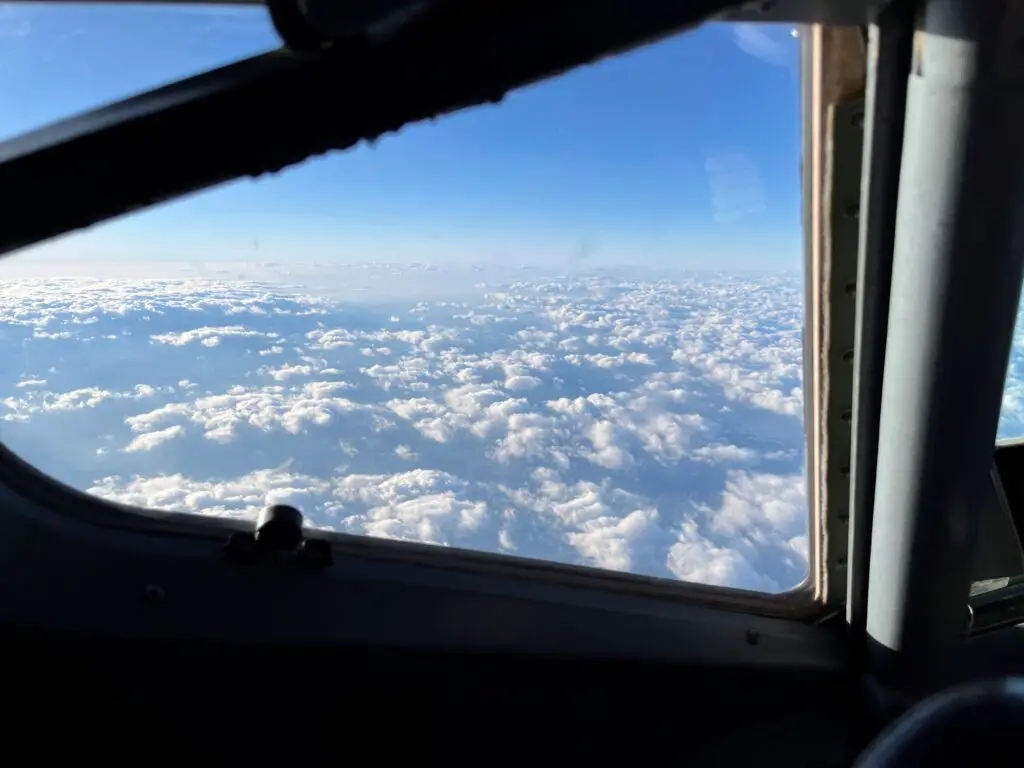
One of the most remarkable characteristics of the 737 Classic generation is that this is the last generation of 737s with most of its indicators still analogic.

A quick cruise and a nice chat with both pilots followed before we slowly started our descent.
While we prepared our descent, an interesting feature; because Iași sits by the Romanian border with Moldova; and since Moldovan airspace was closed as a preemptive measure due to the war in Ukraine, our approach closely neared the border and therefore closed airspace.
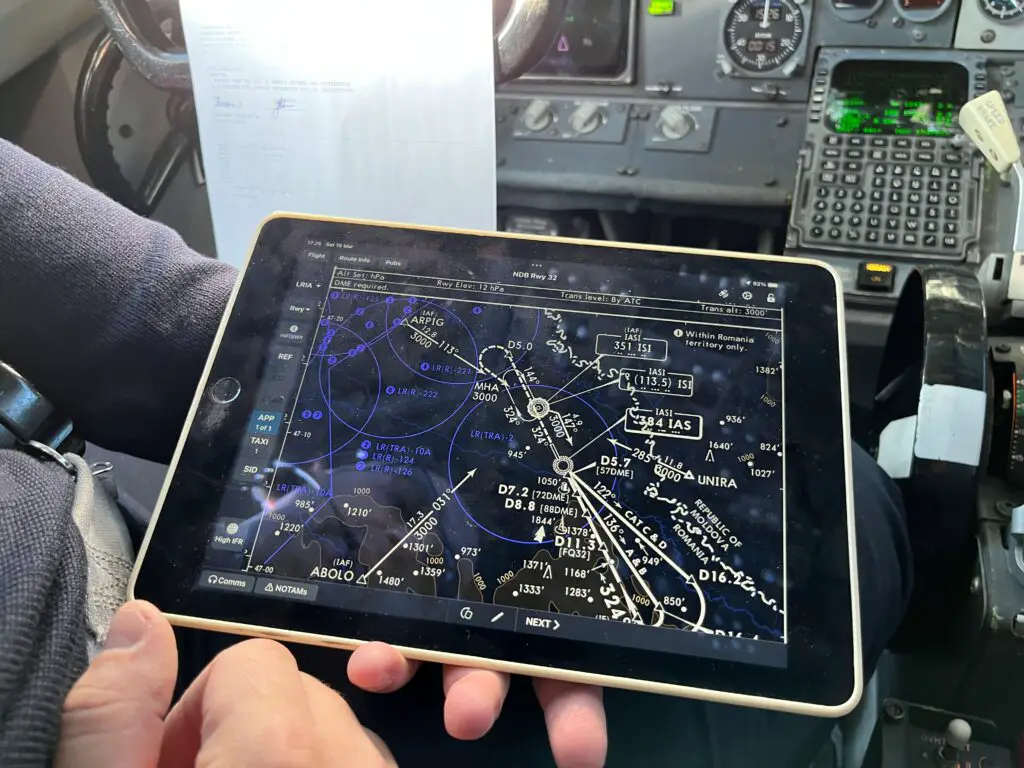
As you can imagine, despite the analogic indications, the 737 Classic has pretty much anything a next-generation narrowbody would have as far as the flight management system goes. The entire route is programmed in the computer, which then directs the aircraft.
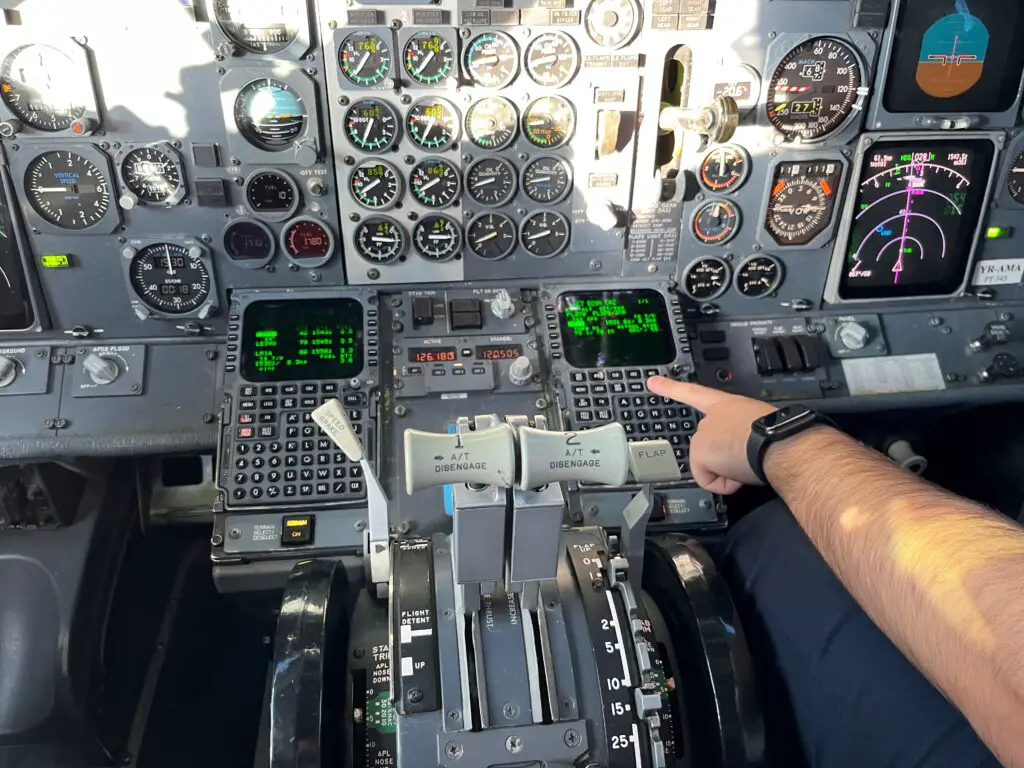
The tablets Blue Air (and most airlines nowadays) provides also help with reducing the paperwork and detailing important information for the pilots.

The sun was beautifully setting to our left as we turned to our final approach to Iași International Airport’s runway 32.
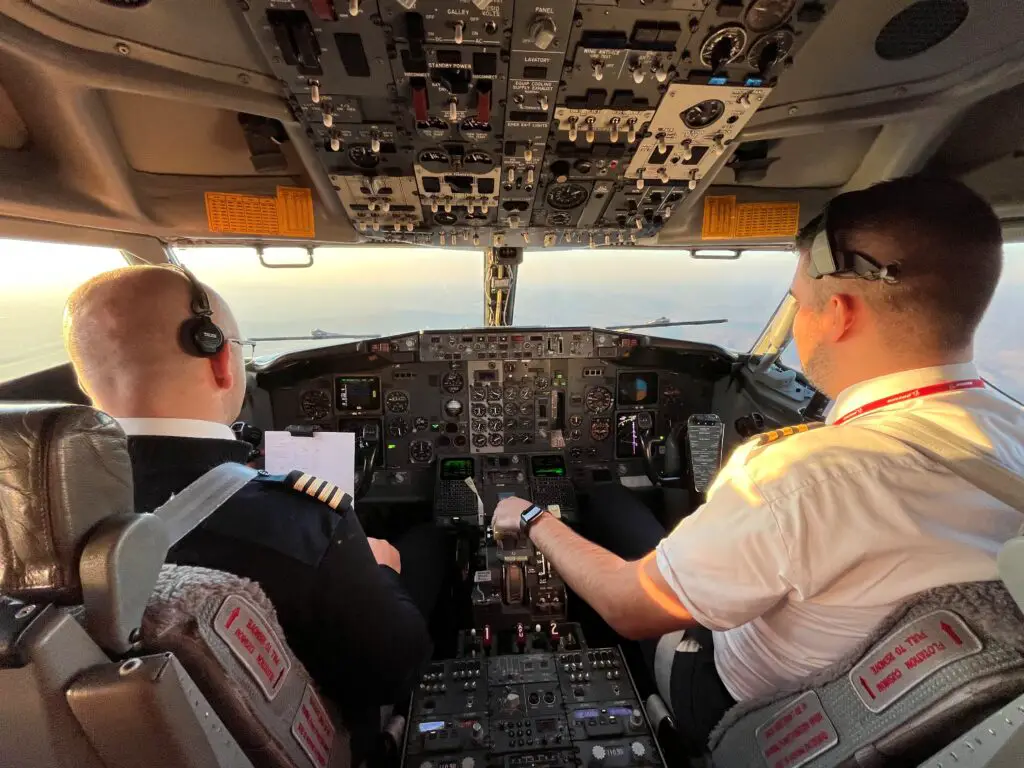
The final approach looked quite steep as there seemed to be a hill just on finals, but at 17h51 — 11 minutes after schedule — YR-AMA landed in Iași. We were weighing 41.7 tons, having burned 1,700 kg of fuel on this hop.

Despite the relatively short runway of 1,800 meters we stopped with ease, doing a backtrack to get back to the small apron of the airport.
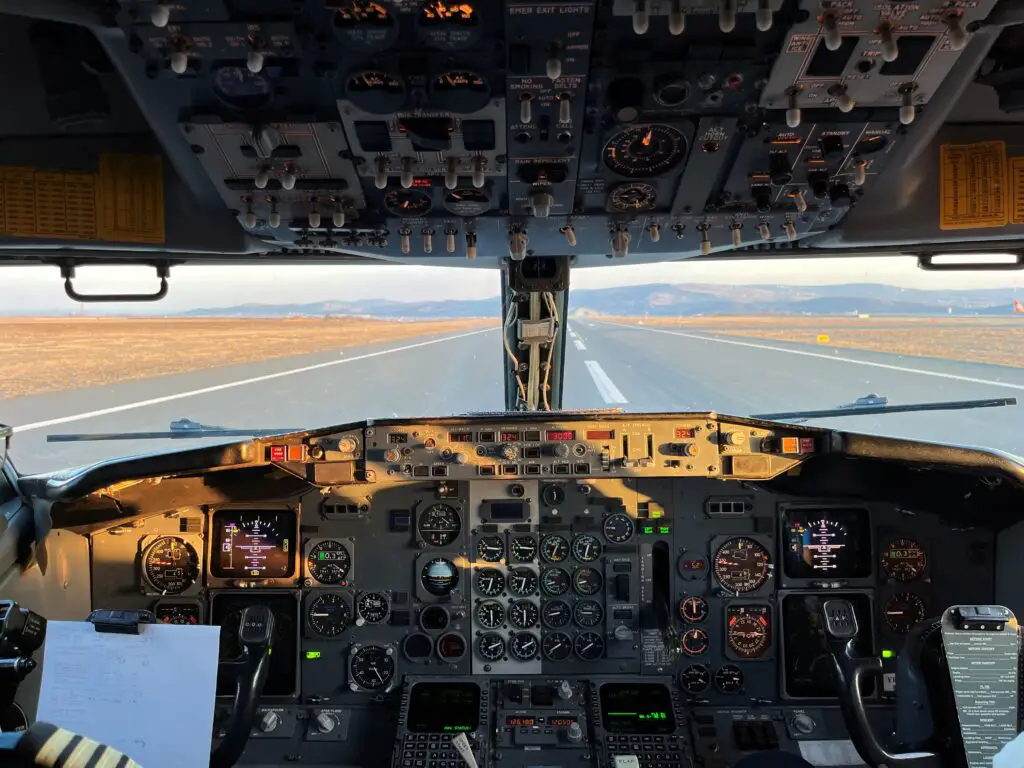
We were the only aircraft parked on that terminal at that point in the afternoon.
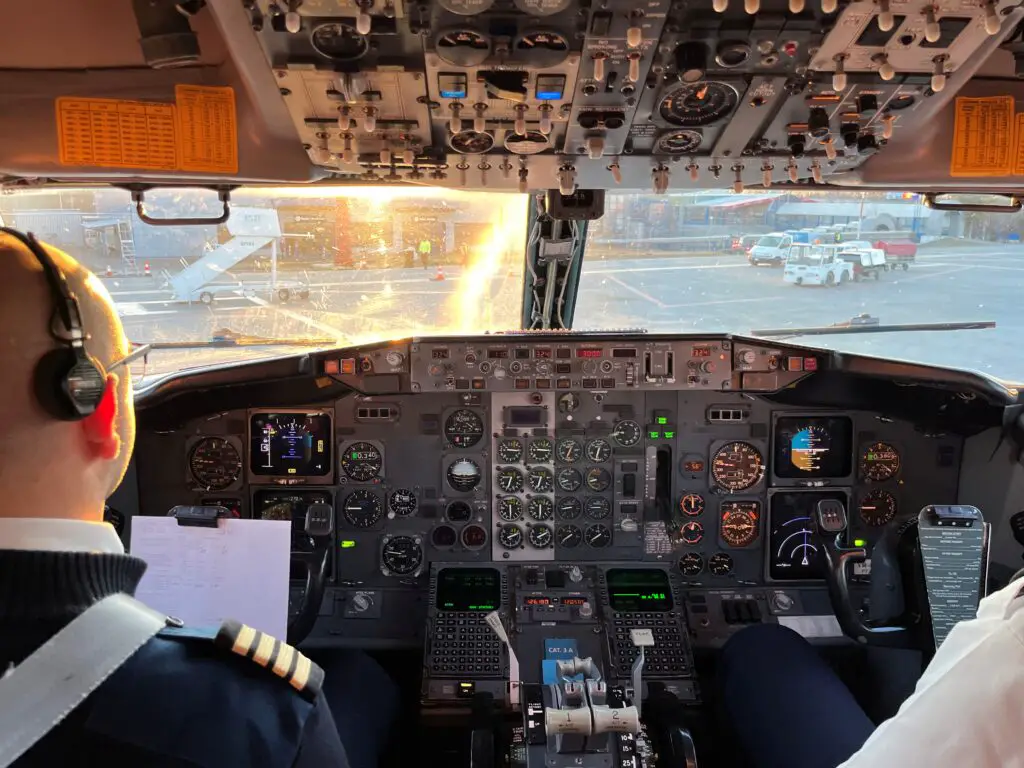
And the sight was truly astonishing… how fortunate I am to do what I do!

While the pilots scrambled their way through the paperwork, I made my way back to the passengers cabin to talk with Thiago and try to get some pictures of the empty cabin. Also, a pic of two exotic aircraft that were stopped at the end of the apron: a HiSky A320 — HiSky is a Moldovan airline which is basing some planes in Romania — and a SkyUp 737-700, which I’d assume has been brought to Iași while the war in Ukraine doesn’t end.
Now while the logo in the bulkhead would make it look like the cabin was brand new…
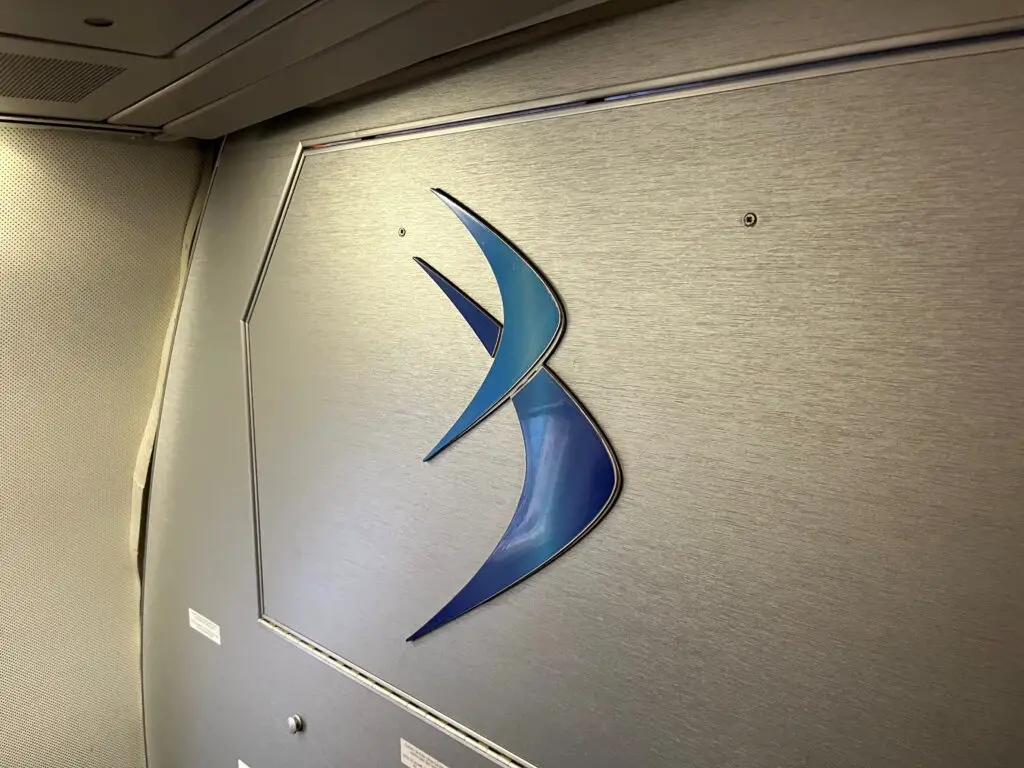
…these seats would tell you a different story. If you don’t know, these are Lufthansa’s seats in their narrowbodies, I think the worst ones of their kind in Europe. At the same time it’s funny that Blue Air has kept it, at least for the AvGeeks like us.
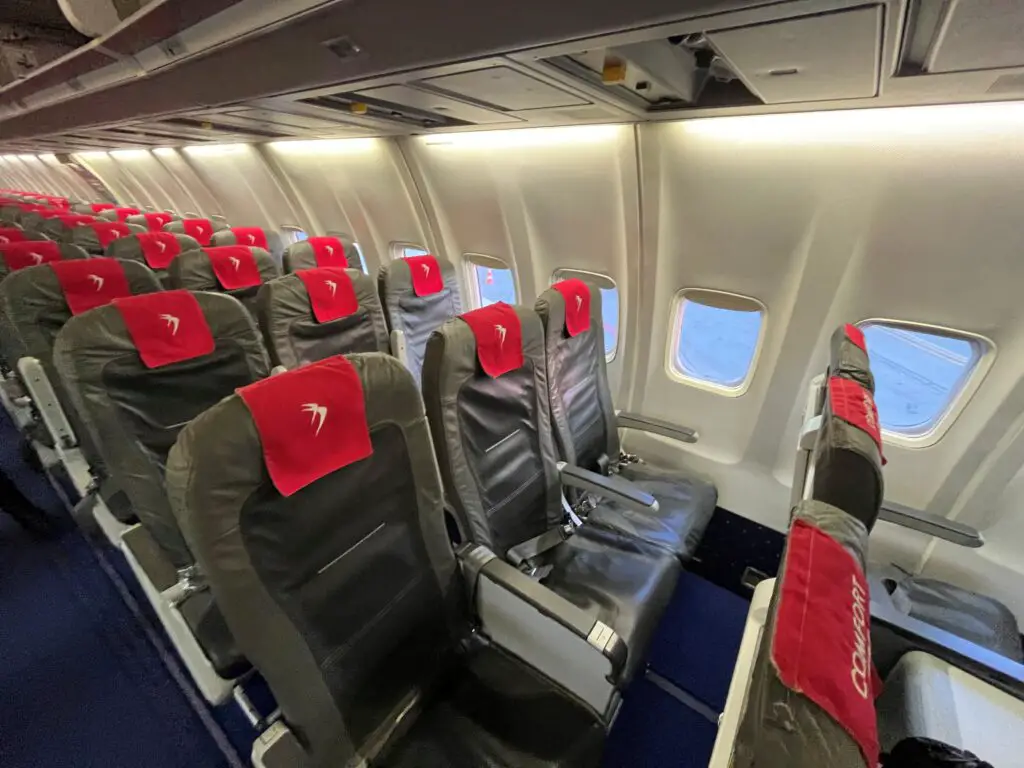
These Recaro seats are quite beaten, and I think it’s the same story with Blue Air’s last remaining 737-500, as it also came from a large stint at Lufthansa.
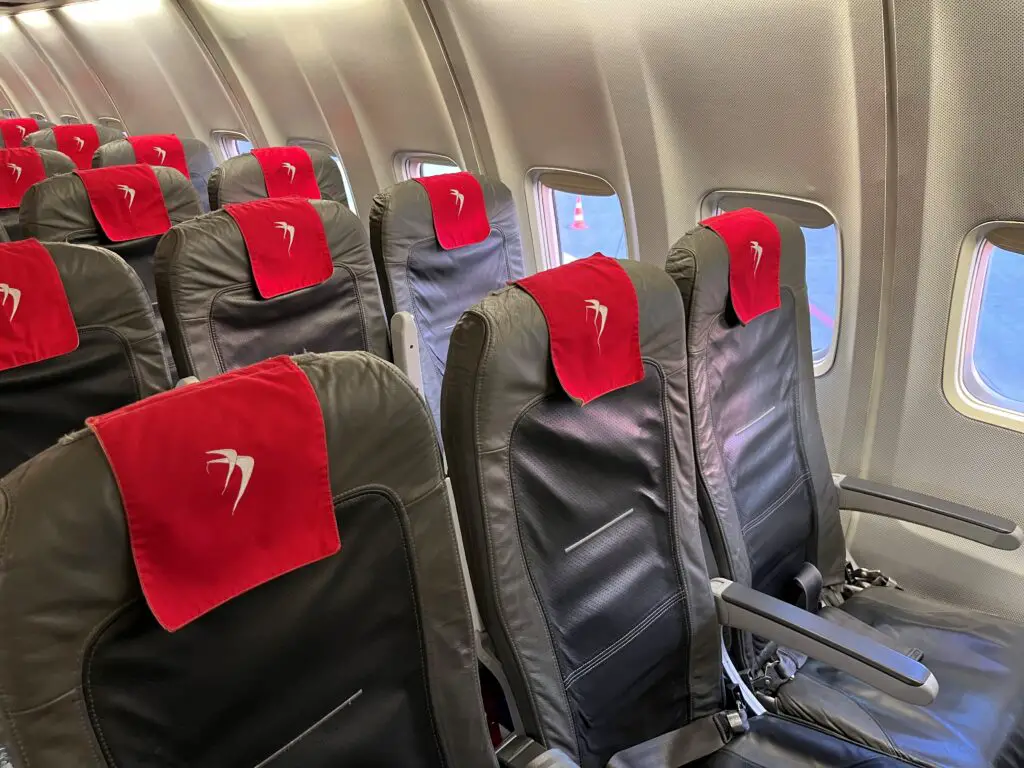
Before we deboarded, a photo of the crew, which looked very professional and happy to do what they do. They’d be the same team that would fly Mike Alpha back to Bucharest the next day.
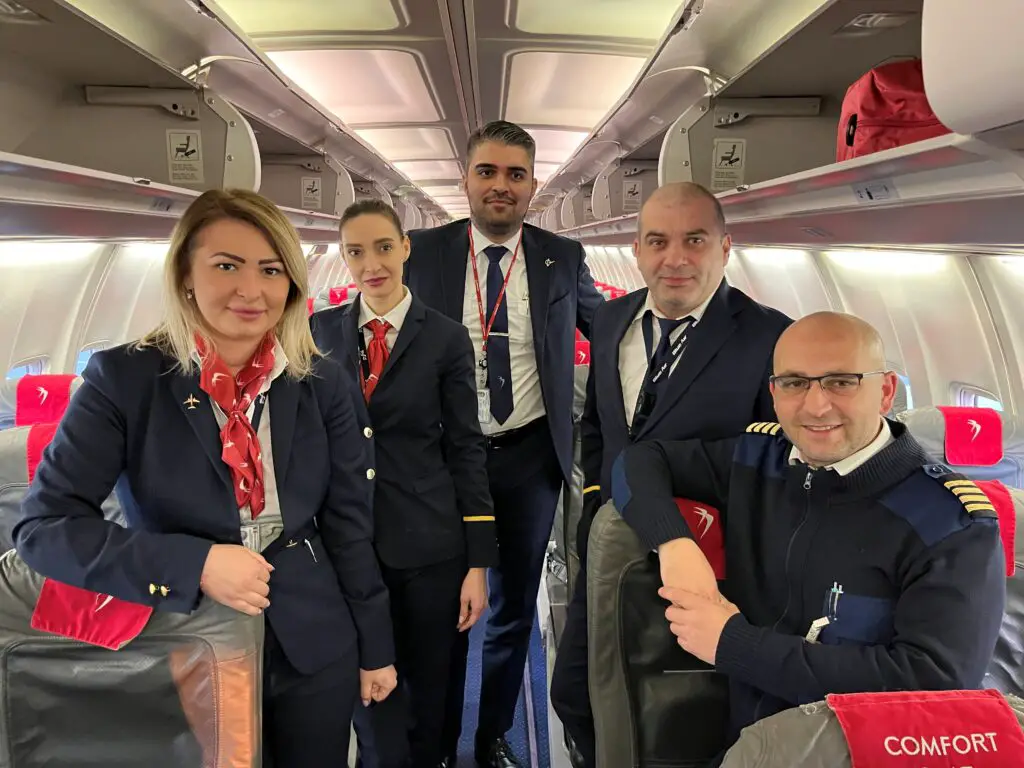
It was a cold afternoon in Iași, so we wanted to rush as quickly as possible to the hotel — and to see something in the city. The crew was kind enough to give us a ride downtown (and back the next day) in their van.
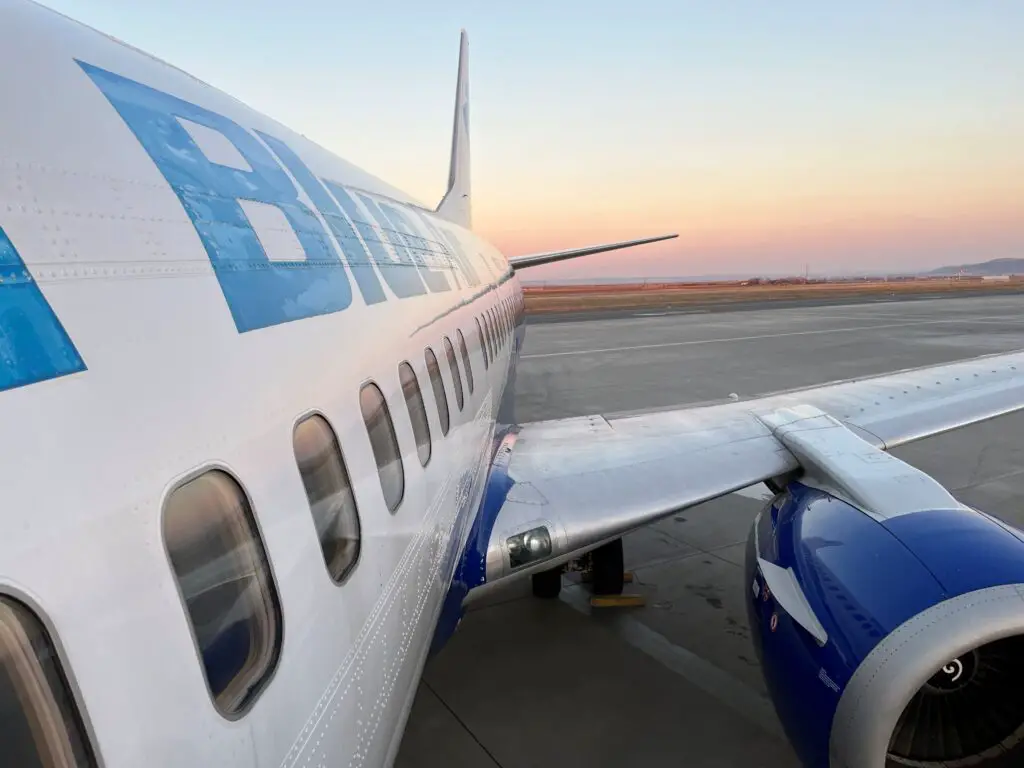
A pic of the engine before we left…

…and a photo of YR-AMA facing Iași’s small terminal.

The plane received its cleaning service and was closed down for its overnight stop.

Whilst the crew stayed at the Continental Hotel, we stayed at the Ramada Hotel — the two were at walking distance from each other, and very conveniently located in downtown Iași.
Iași is truly a gem; I was left quite impressed by the city’s appearance and its buildings. The next morning we still had some time to walk around town, sightseeing buildings like the Palatul Culturii…

…which is a beautiful building from both sides.
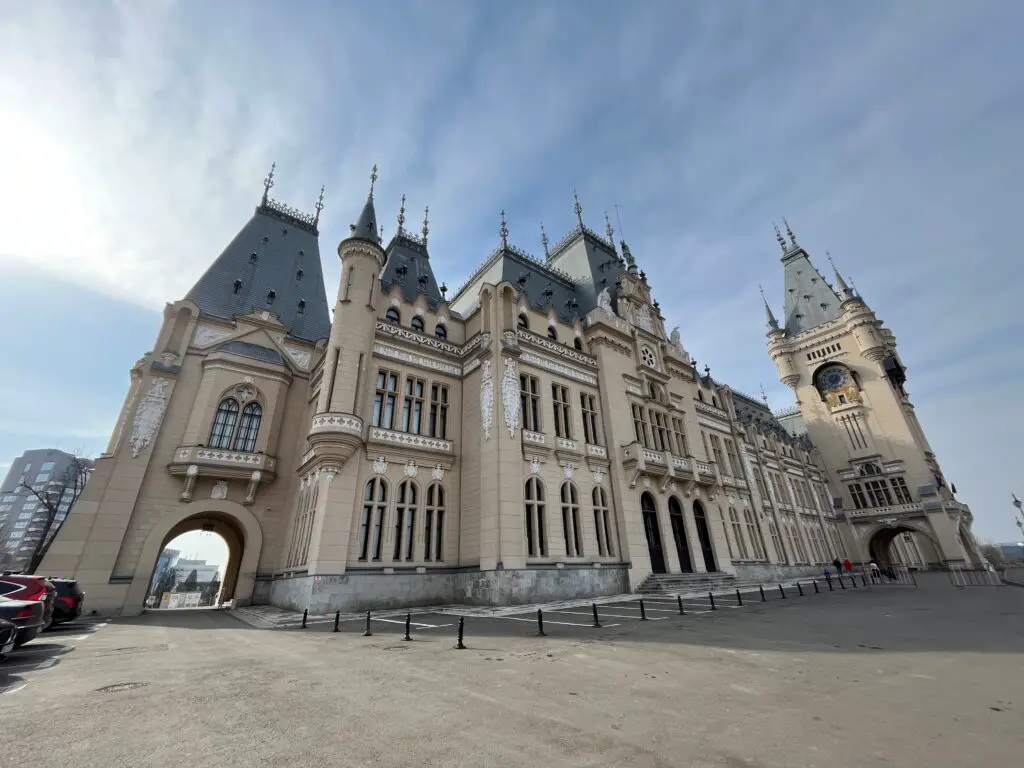
Then, the impressive Bulevardul Ștefan cel Mare street, which was thriving that sunny Sunday morning.

It’s truly, truly a pretty city, and I hope to be back very soon.
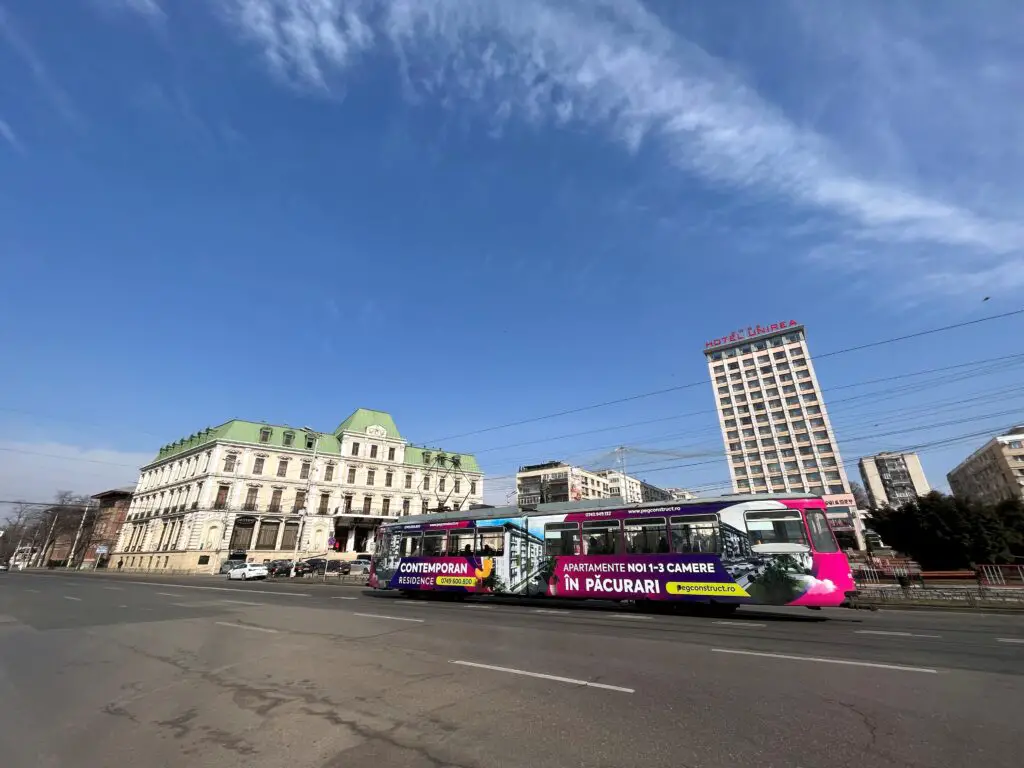
Eventually we met up with the crew in front of the Continental Hotel and made our way to the airport.
0B6302 IAS-OTP
Since we arrived to the airport with the crew and the flight was quite empty, we were one of the first passengers to check-in.
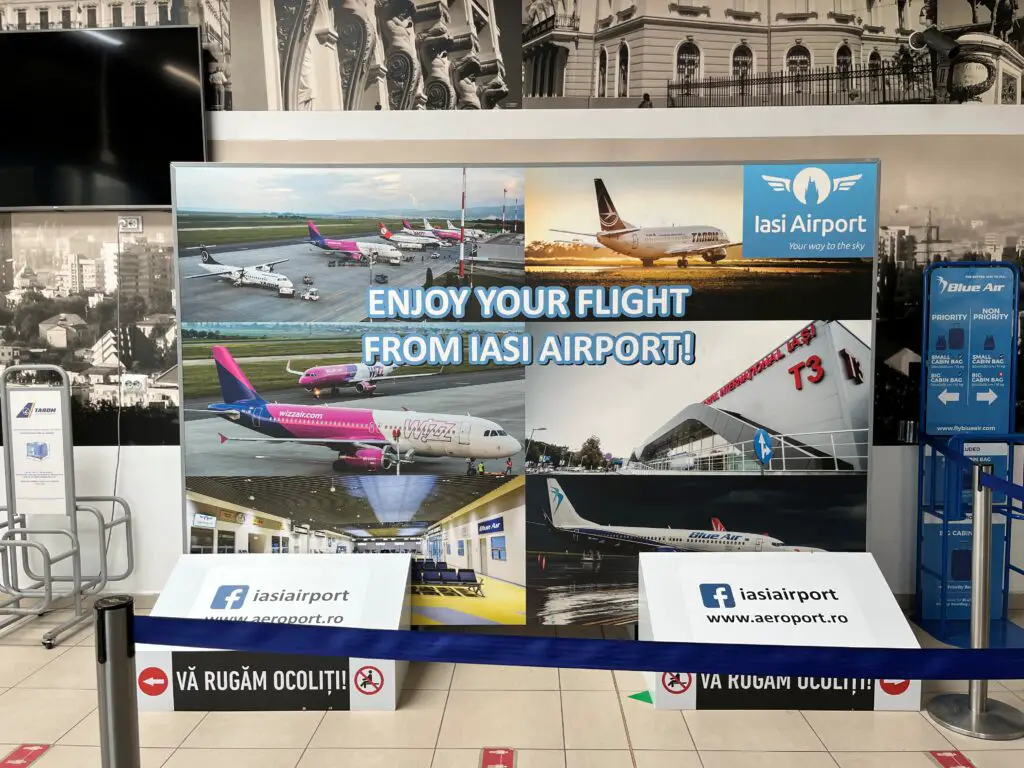
Iași Airport’s terminal is really small, but I think it serves its demand quite well. Alas, regional airports like these are usually so chilled to fly from.

The gates area was quite tight, though, and I think the building could only handle one flight at a time. This was only the fifth flight of the day out of eleven overall, and the airline mix was quite diverse.
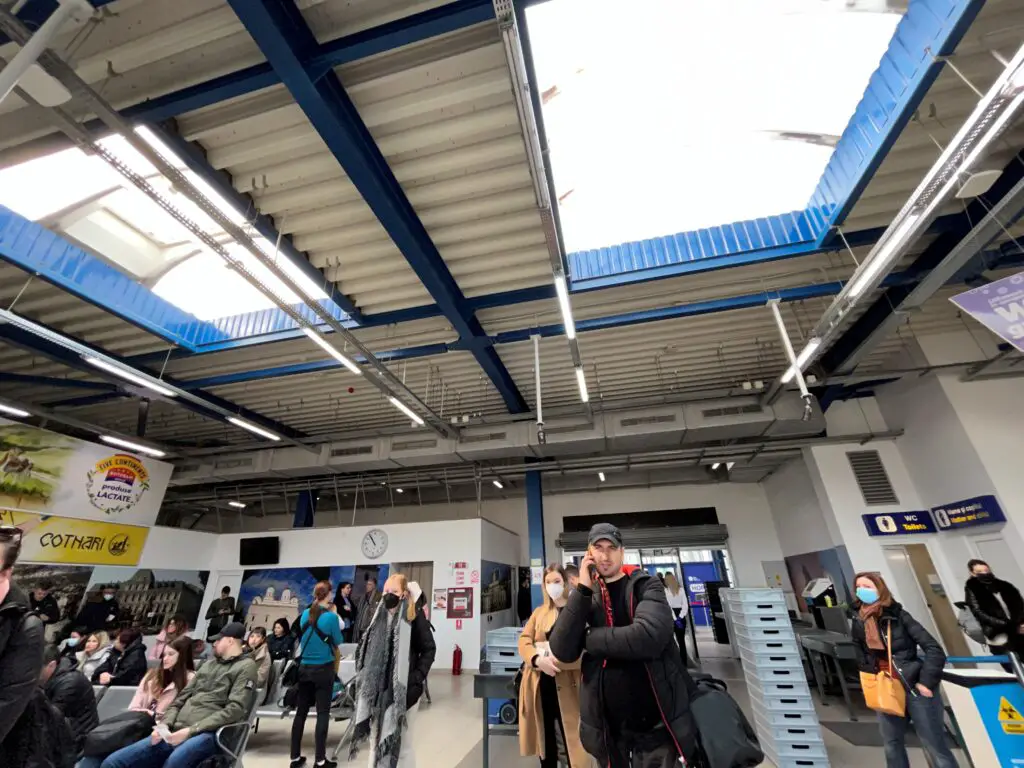
According to Cirium’s Diio Mi application, there was our flight, three other runs to Bucharest with TAROM, Wizz flights to Barcelona, Turin, Madrid, Liverpool, London/Luton and Milan/Bergamo, a LOT flight to Warsaw and another to Vienna with Austrian.
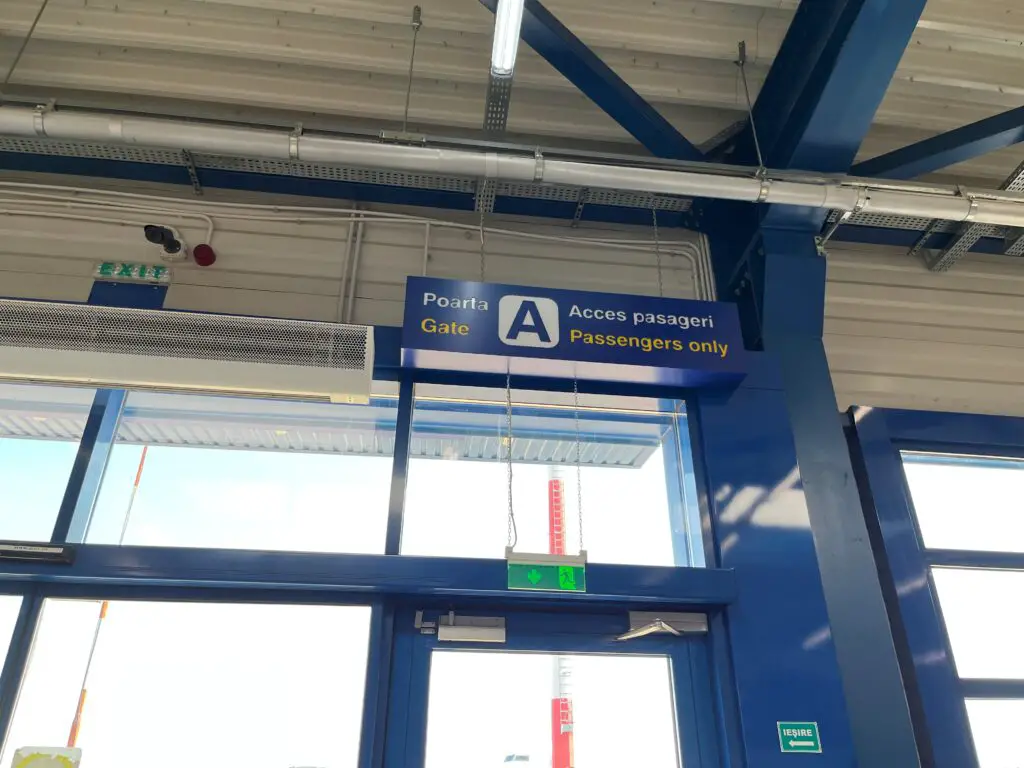
Our aircraft, naturally the same as the previous day, was there waiting for us. The Captain allowed us to board before to photograph the cabin.

Again it was a beautiful day to fly, and today we had an even light load, with 69 passengers spread over the 737’s 120 seats.

Boarding was cleared some time after we got in.
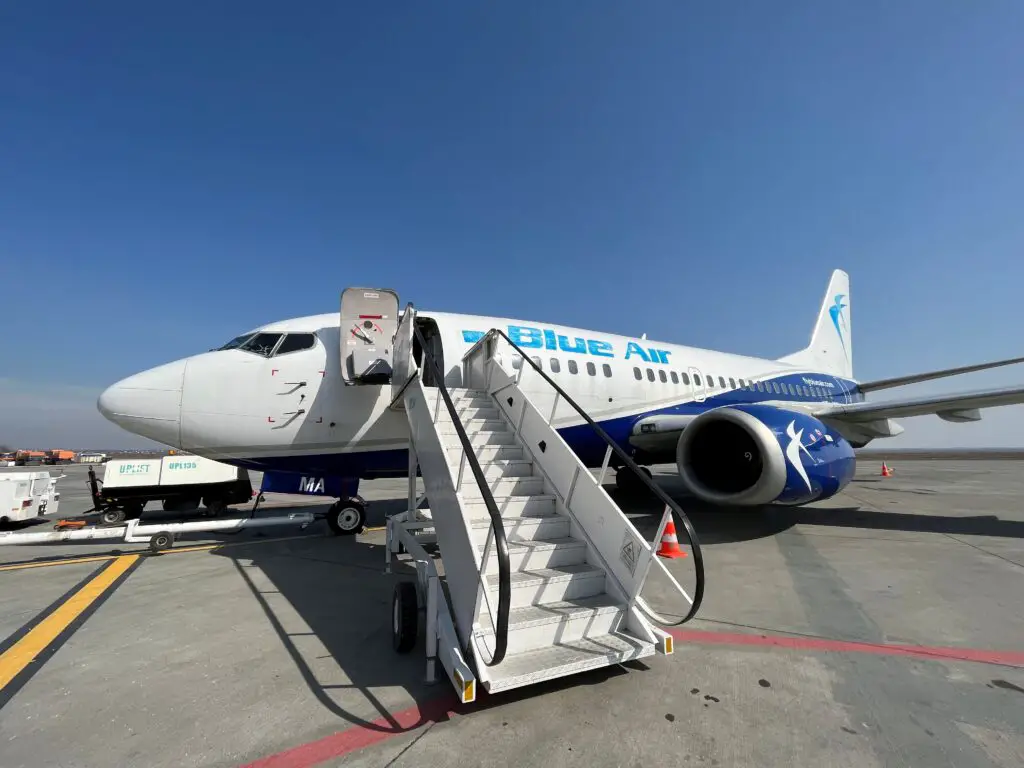
The cabin was found as we left it the other day; the difference to the newer generations are like night and day, as you’ll read in our report in Blue Air’s 737 MAX (coming soon!).

A photo with the flight crew before I waved goodbye to them and Thiago — who would be on the jumpseat for this leg…
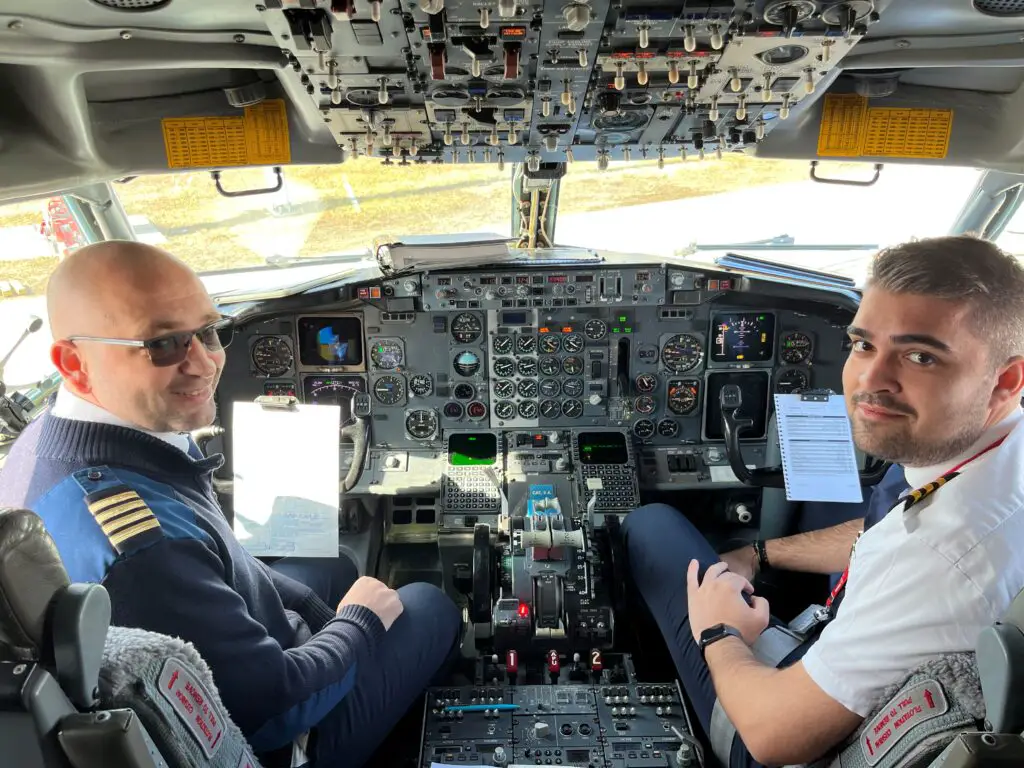
…and another of the cockpit indicators.
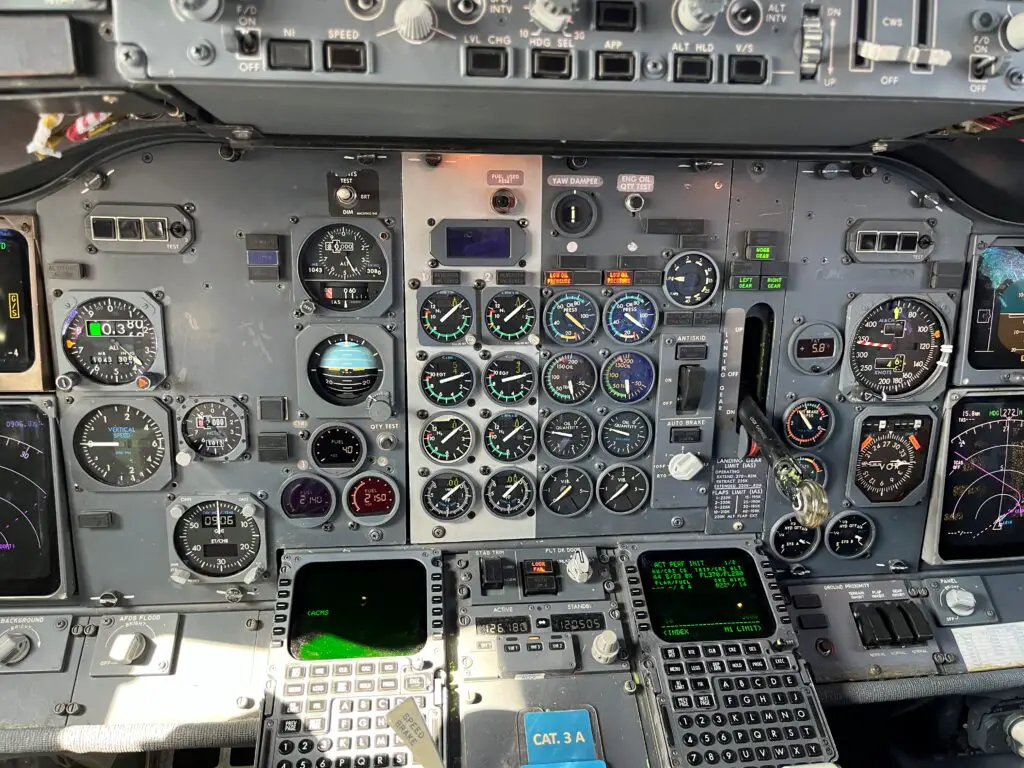
And YR-AMA’s «license plate», if you’re wondering if that’s actually a legit 737 Classic.

Back to my seat, I found out that, even though Lufthansa is known for their barbaric pitch in narrowbodies, they’d kept some sort of space for the legs in their 737 fleet. Blue Air has kept it the same, with 120 seats in the cabin. Website b737.org.uk says that the -500 can go to up to 140 seats (somehow), so the seat pitch was definitely not a problem.
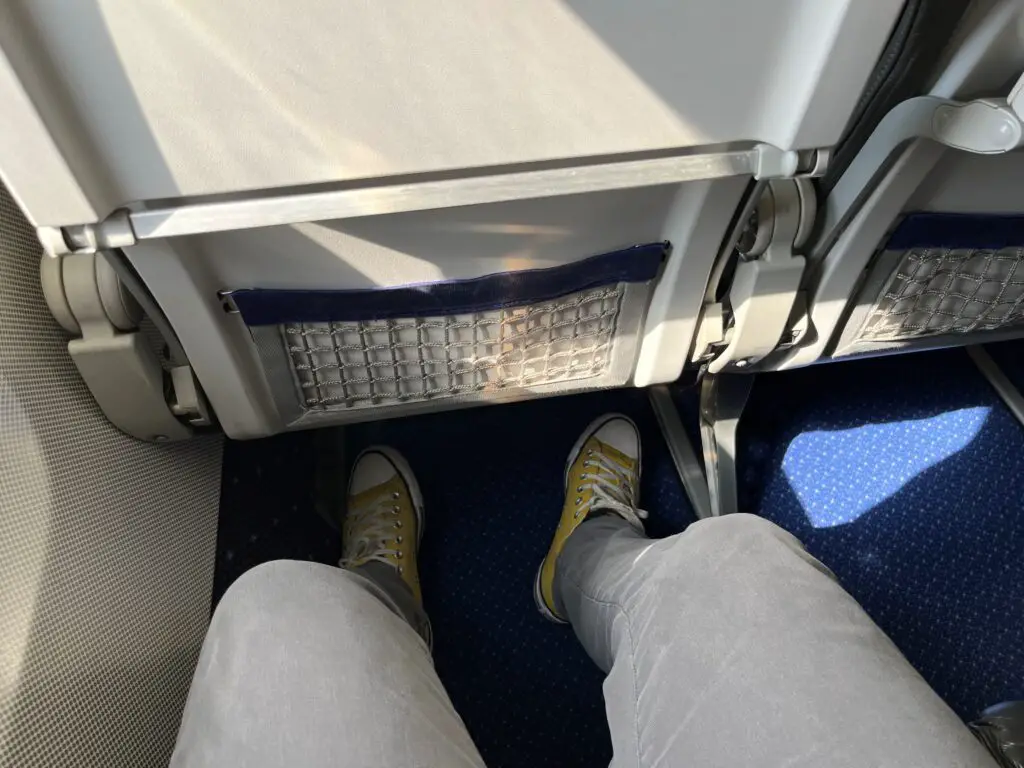
At 11h15, ten minutes before schedule, doors were closed. Taxi was again quite quick since the airport is small and at 11h25 Mike Alpha took off with ease from Iași.
The engines are way louder than the 737NG’s and especially the MAX’s, so from the passenger point of view, that’s one way to see the Classic’s retirement from a positive perspective.
For the crews, that also obviously helps with decreasing the level of fatigue, which is something every cabin crew I’ve heard from has confirmed.
Another point is that the aircraft’s luggage bins are way smaller than the newer generations’ — especially than the NG’s Sky Interior and the MAXes’. So there’s less storage space for everyone and that’s another low point.
As for me, well, I didn’t mind at all the louder engines — but admitedly if I flew this bird frequently, having experienced the 737 MAXes and the A320neos of the world, it would bother me a little.

As the first flight, this one was short, so there was no onboard service — and the seat belt signs were only briefly turned off, by the way.
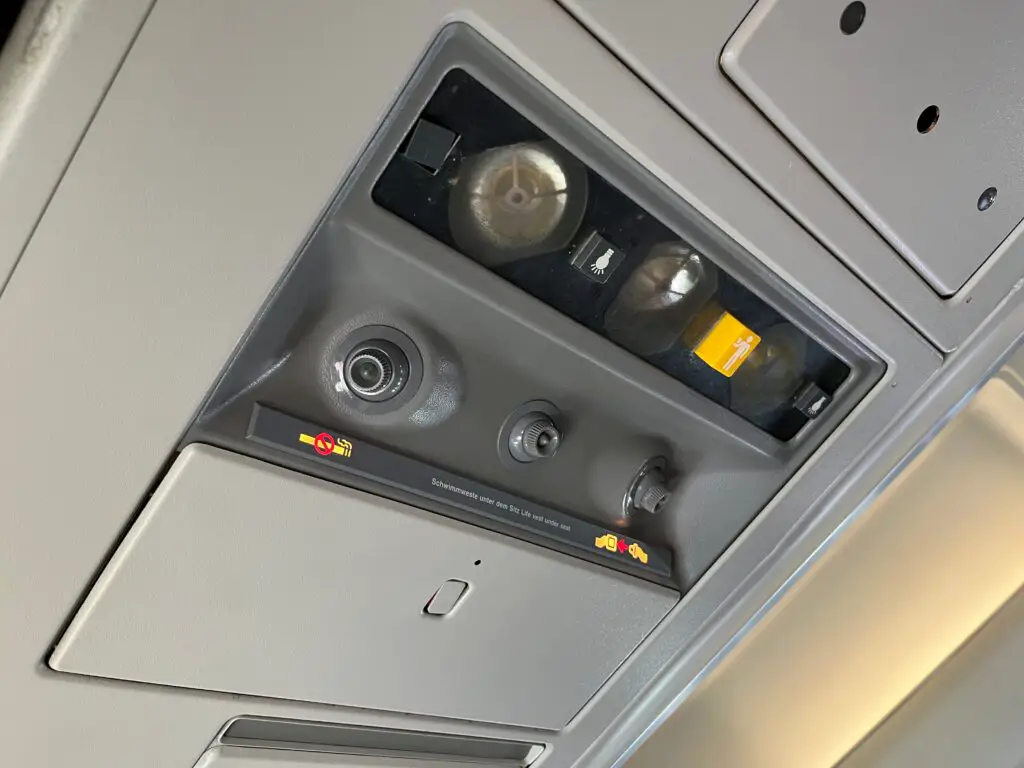
And if you looked closely, more signs of Mike Alpha’s previous operator…
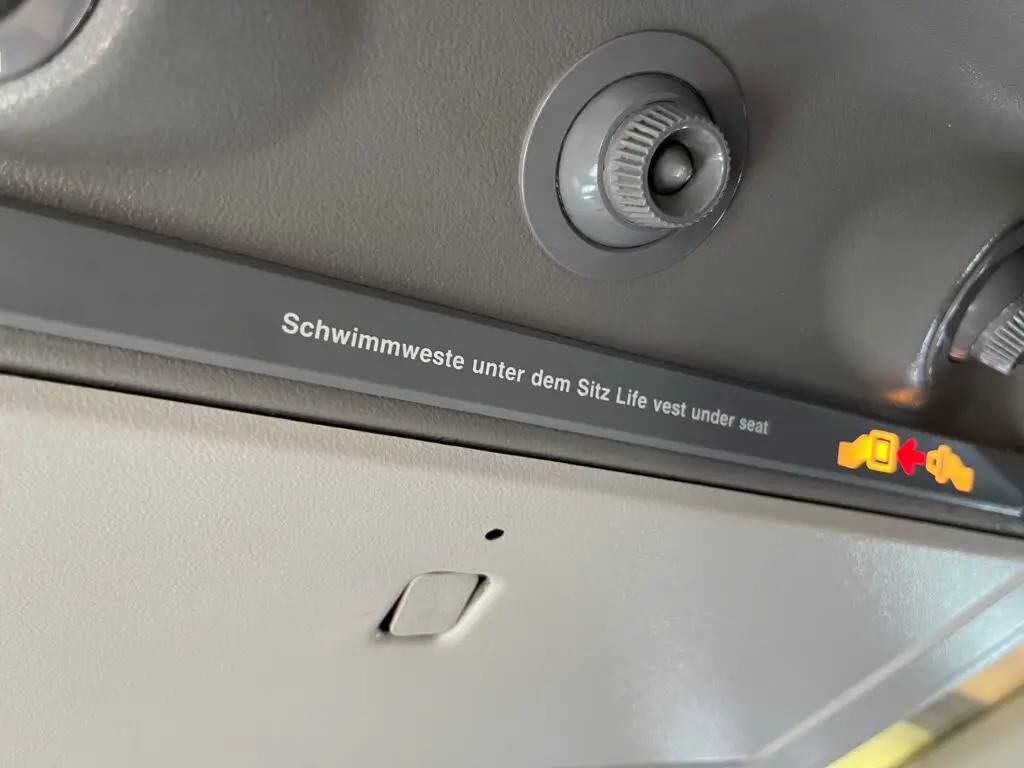
My seat was one of the best in the house, with a privileged sight of the engine and the wing.
This really was more a scenic flight than a flight review per se, I would say. I really tried to enjoy every minute of it, as it’s not everyday we fly a 737 Classic these days, especially in Europe.

Soon we were descending into Otopeni International.

At 12h01 we made a smooth landing into Bucharest’s 08R runway.
We were so light that we cleared the runway at taxiway Hotel, which would make it a run of around 500 or 600 metres only. When I spoke to the pilots after parking, they were laughing about it… and they said autobrakes weren’t even on!
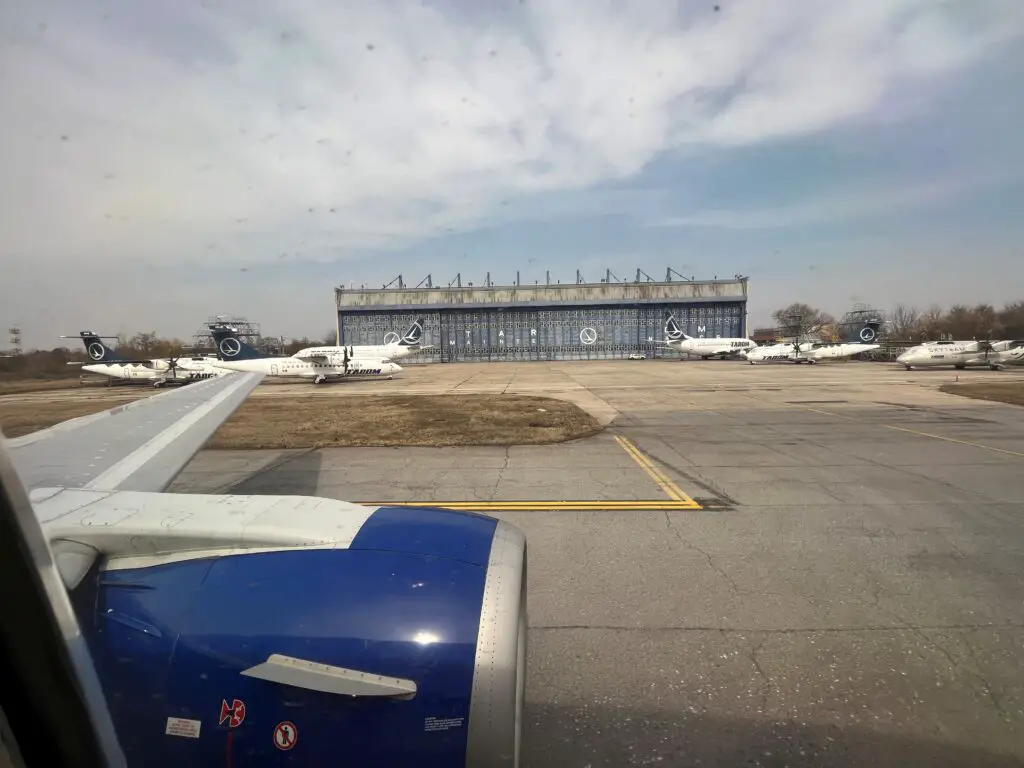
We stopped again in a remote position, by a Wizz Air A320.
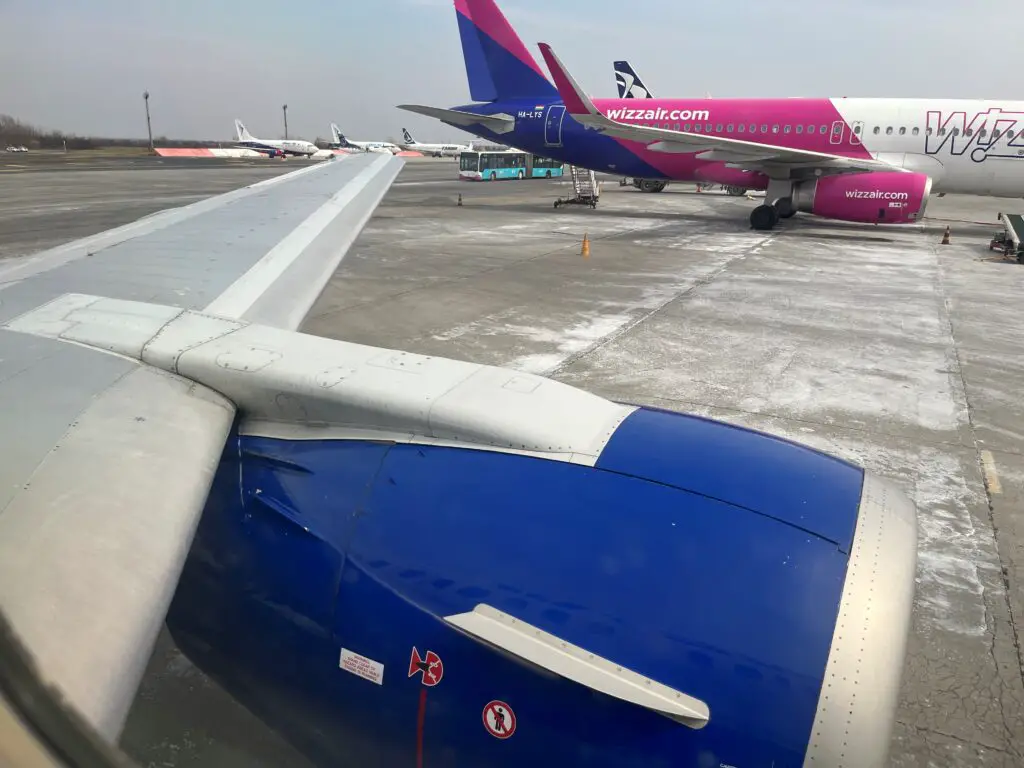
We would deboard with the crew, so whilst passengers deboarded I paid a visit to the lavatory, which given the length of the flight, was quite clean.
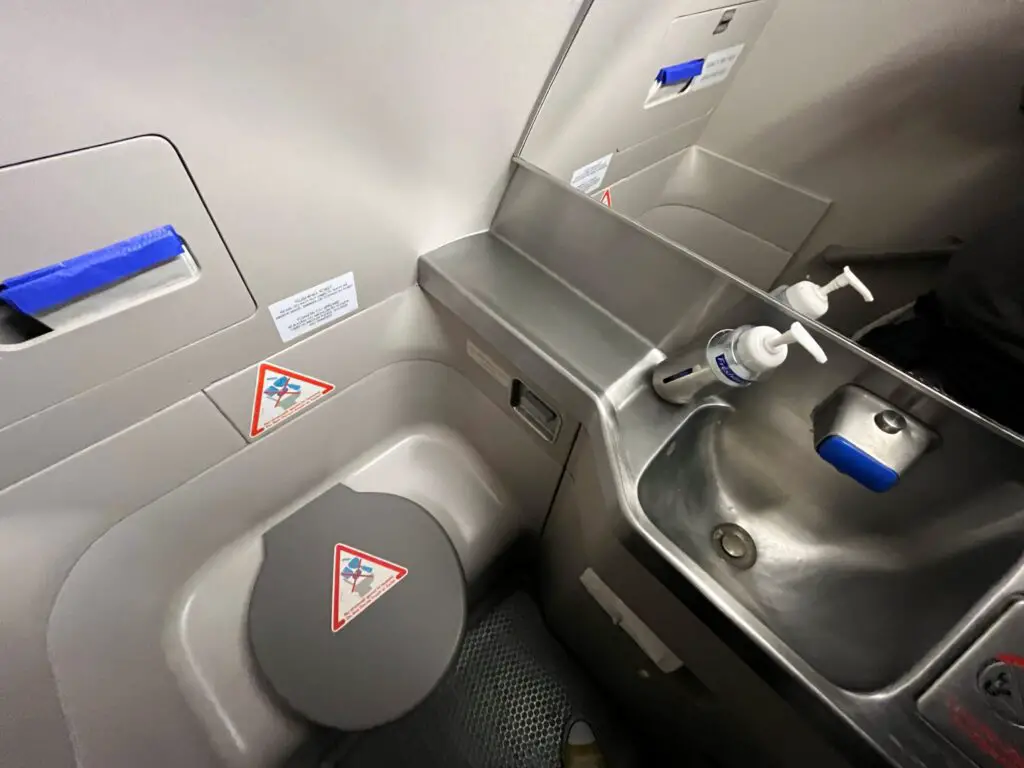
The trash bin also gave a hint of YR-AMA’s previous operator.
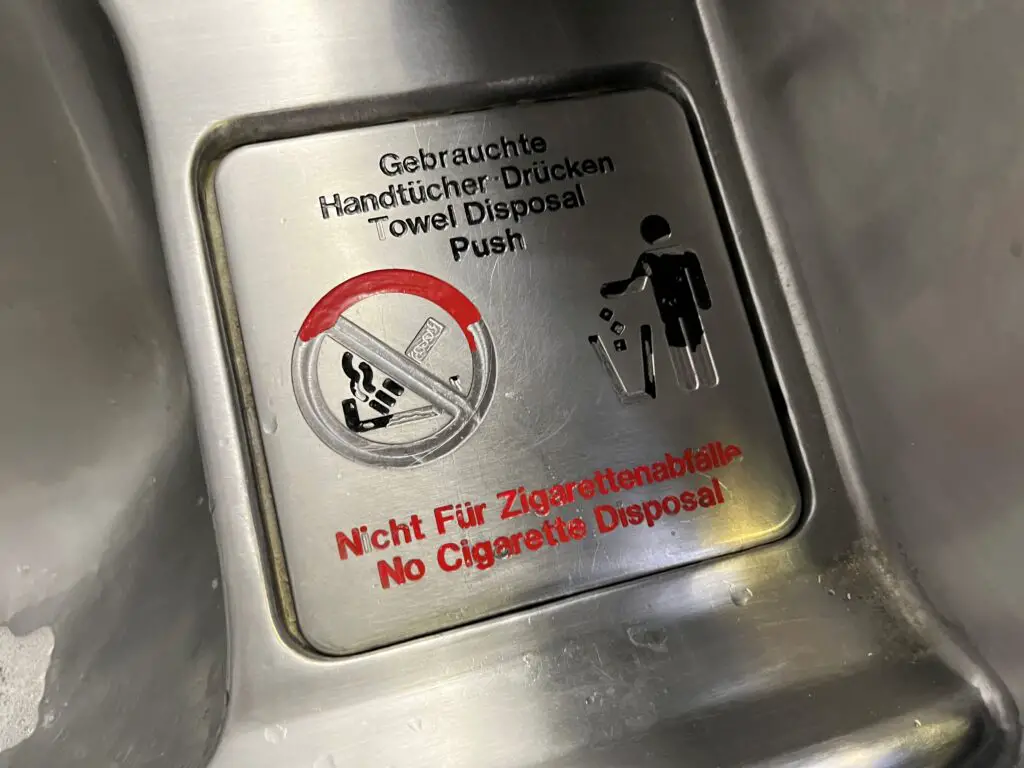
We waved goodbye to the 737-500 and took the van with the crew.

The domestic arrivals area is also very small, and remote only — this is its door.
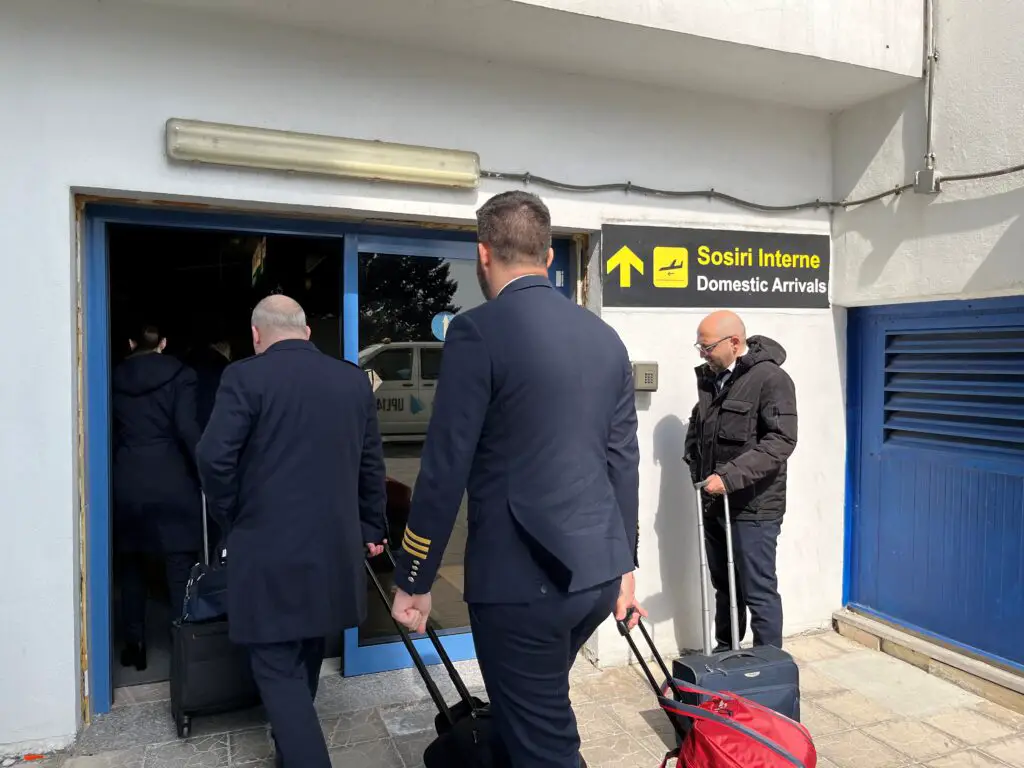
We would still have some hours to spare before our next flight, on the other end of the 737 evolution line: the 737 MAX.
Final remarks
How great it is to fly the Boeing 737 Classic these days in Europe. I could remember my last flight in one, almost 11 years ago in Brazil — it was a -300 series operated by Webjet.
The Classic remains as exciting now as it was then — even more now that it’s becoming rarer and rarer here in Europe. It was truly a unique experience flying it on the jumpseat, and I hope I could manage to bring at least a fraction of this thrill to you all.
As far as Blue Air’s Classics go, back in March I would have said you really gotta be lucky to catch a flight in one of the two that remained, since they were deployed at short notice, only when demand for a specific flight was weak. In fact, back then only one was active (YR-AMA), with YR-AME stopped.
For the Summer season, though, YR-AMA was transfered to Blue Air’s Turin base, and the aircraft is routinely flying the airline’s five weekly frequencies to Lamezia Terme and its four weekly frequencies to Catania.
YR-AME is now active and based in Bucharest, flying whichever missions Blue Air requires it to do.
Outside of Blue Air, in Europe (with the exception of Belarus and Russia) only Albawings has been operating the series regularly. So there are few options to fly the type these days.






